iBasso DX220 Digital Audio Player Review
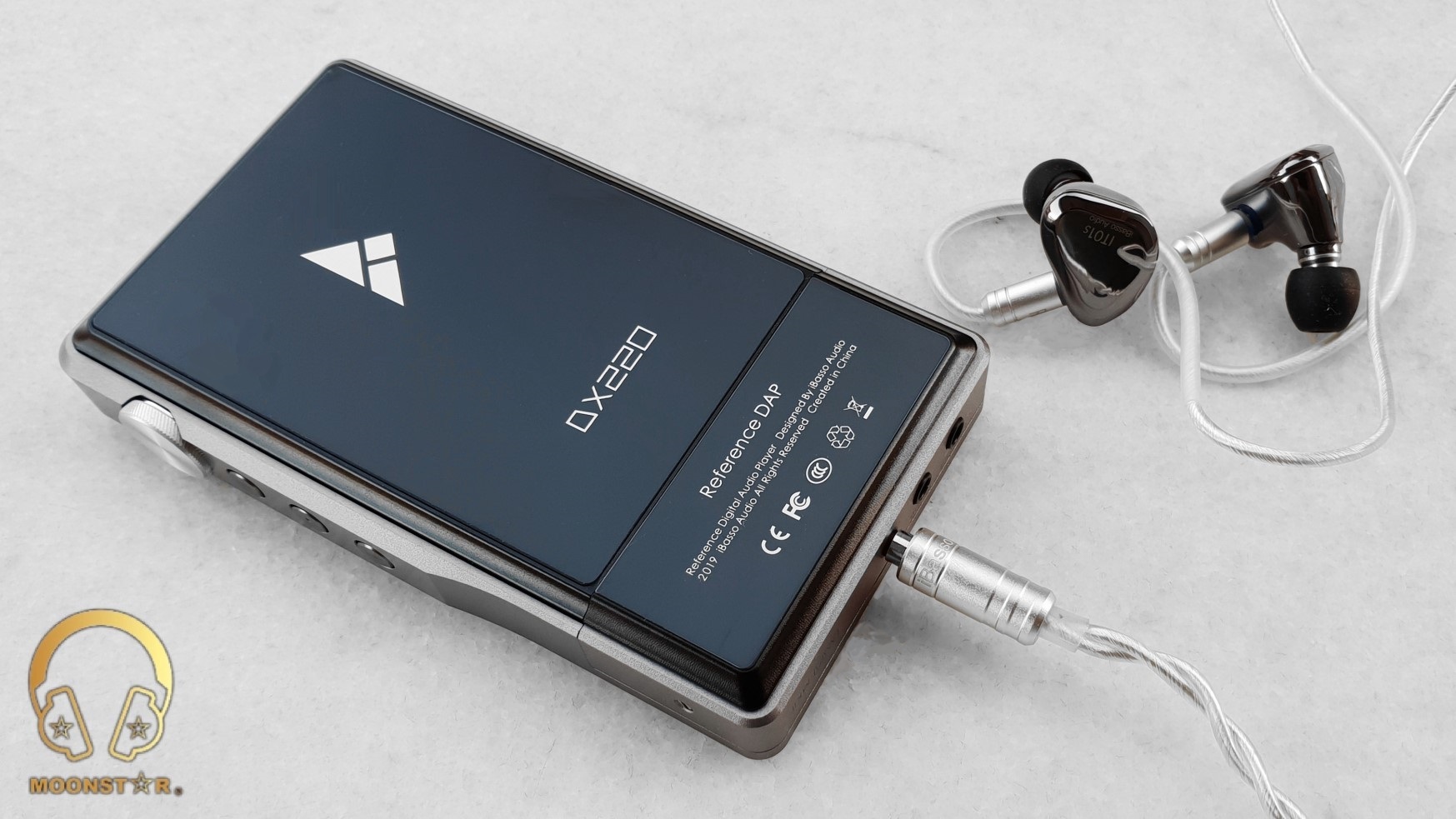

Introduction:
iBasso is Chinese company that is specialized in the Portable Audio products such like Digital Audio Players (DAP), Portable Amplifiers and In-Ear Monitors.
The iBasso DX220 that I will now review for you is the New Flagship Reference DAP of the company which features some interesting specs like an ES9028Pro Dual DAC Chip, 5.0” Sharp 1080P Full Screen, Replaceable AMP Cards, MQA and many more.
Official Webpage: http://www.ibasso.com/
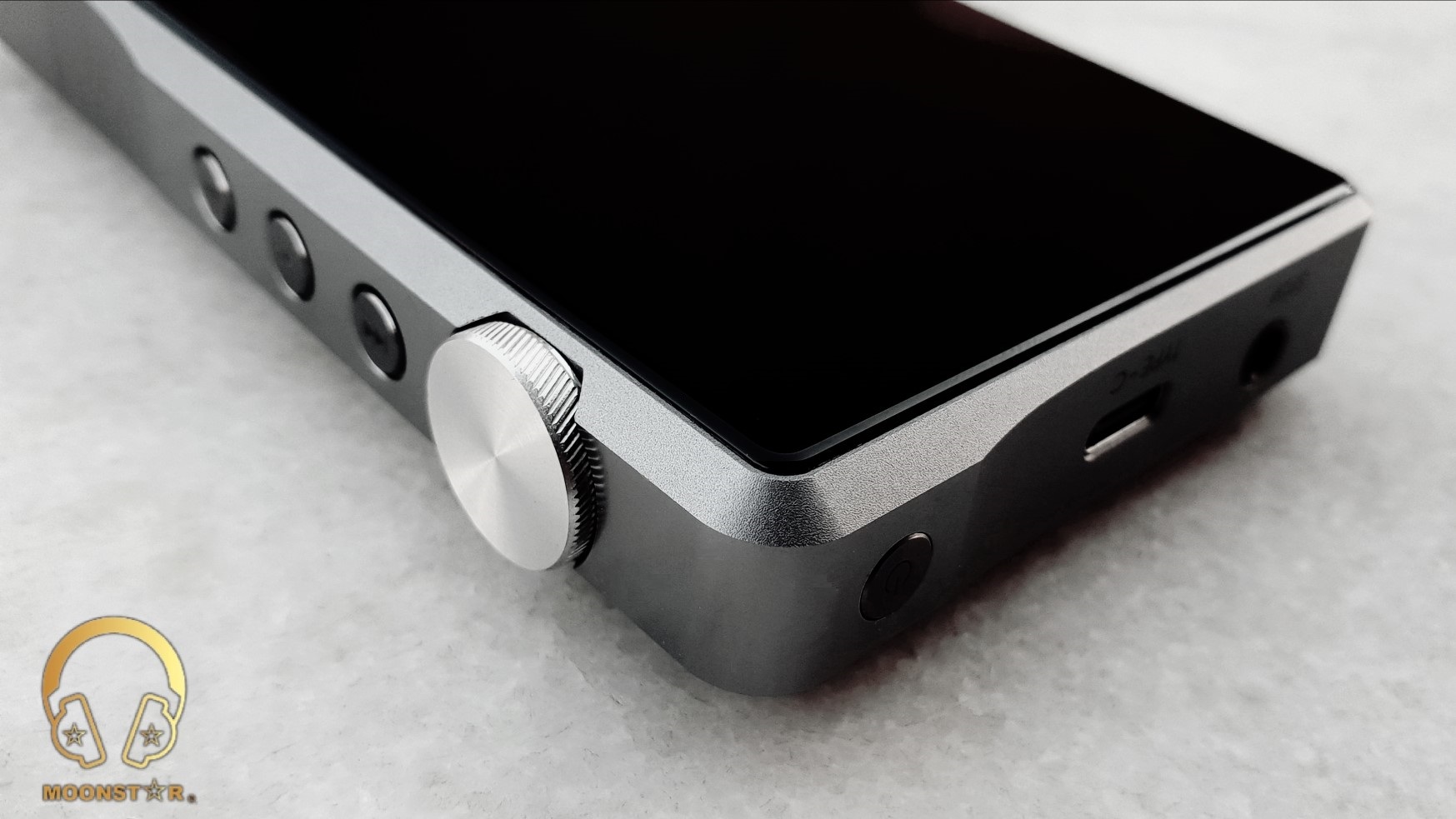
Disclaimer:
I would like to thank iBasso for providing me the DX220 as review sample. I am not affiliated with iBasso beyond this review and these words reflect my true and unaltered opinions about the product!
Purchase Links:
You can purchase the iBasso DX220 for USD $899.00 under the following link;
Purchase Link : http://www.ibasso.com/cp_xq_dy.php?id=8401#page16
Package and Accessories:
The device comes in a red box, which is wrapped with a cardboard that is in silver which features a nice iridescent effect.
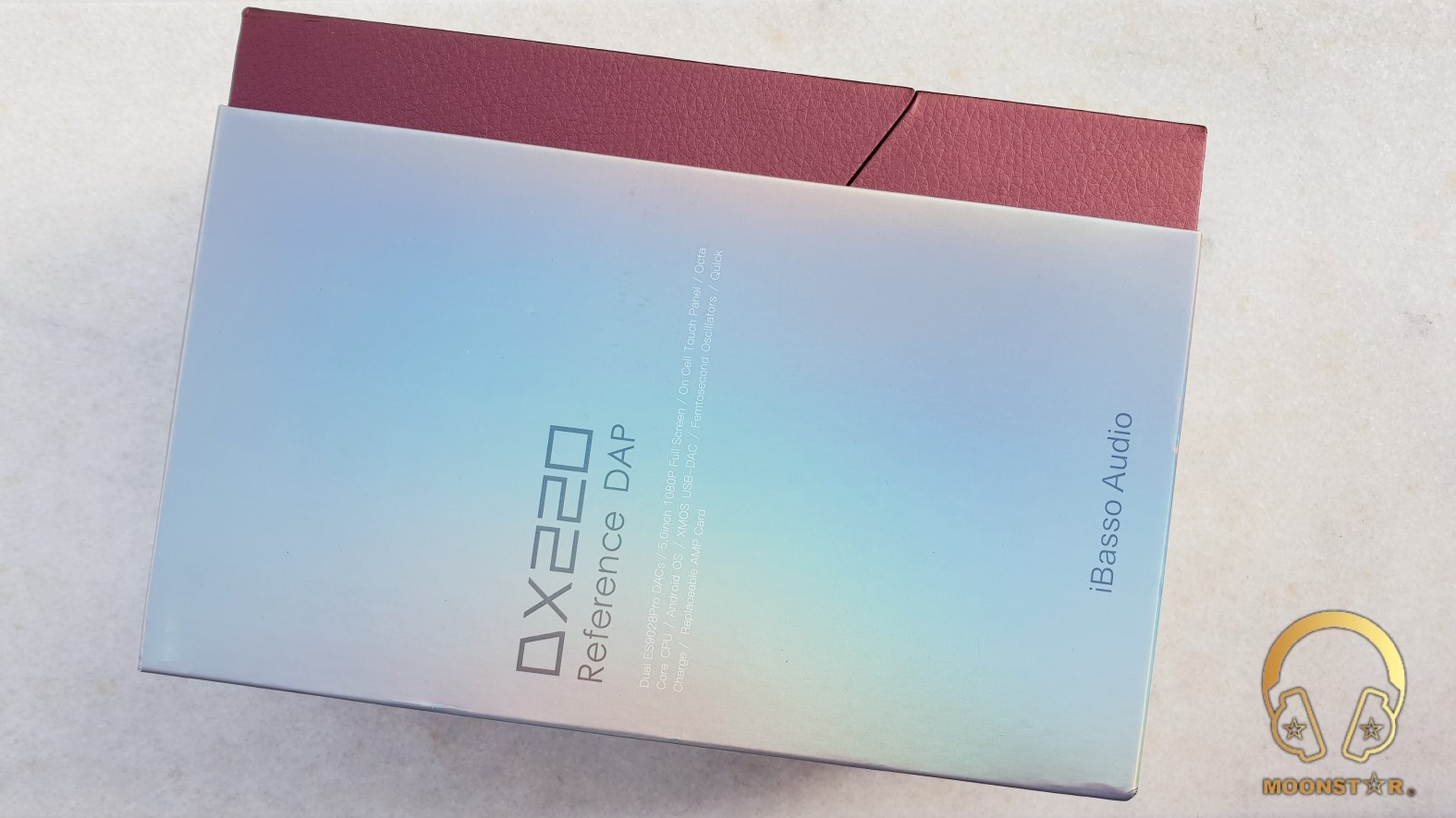

This box is containing the following items/accessories;
- 1 x iBasso DX220 HiFi Player
- 2 x Screen protective films
- 1 x Leather case
- 1 x USB Type-C Charging/Data Cable
- 1 x Coaxial (SPDIF) Cable
- 1 x Burn-In Cable
- 1 x User Manual
- 1 x Warranty Card
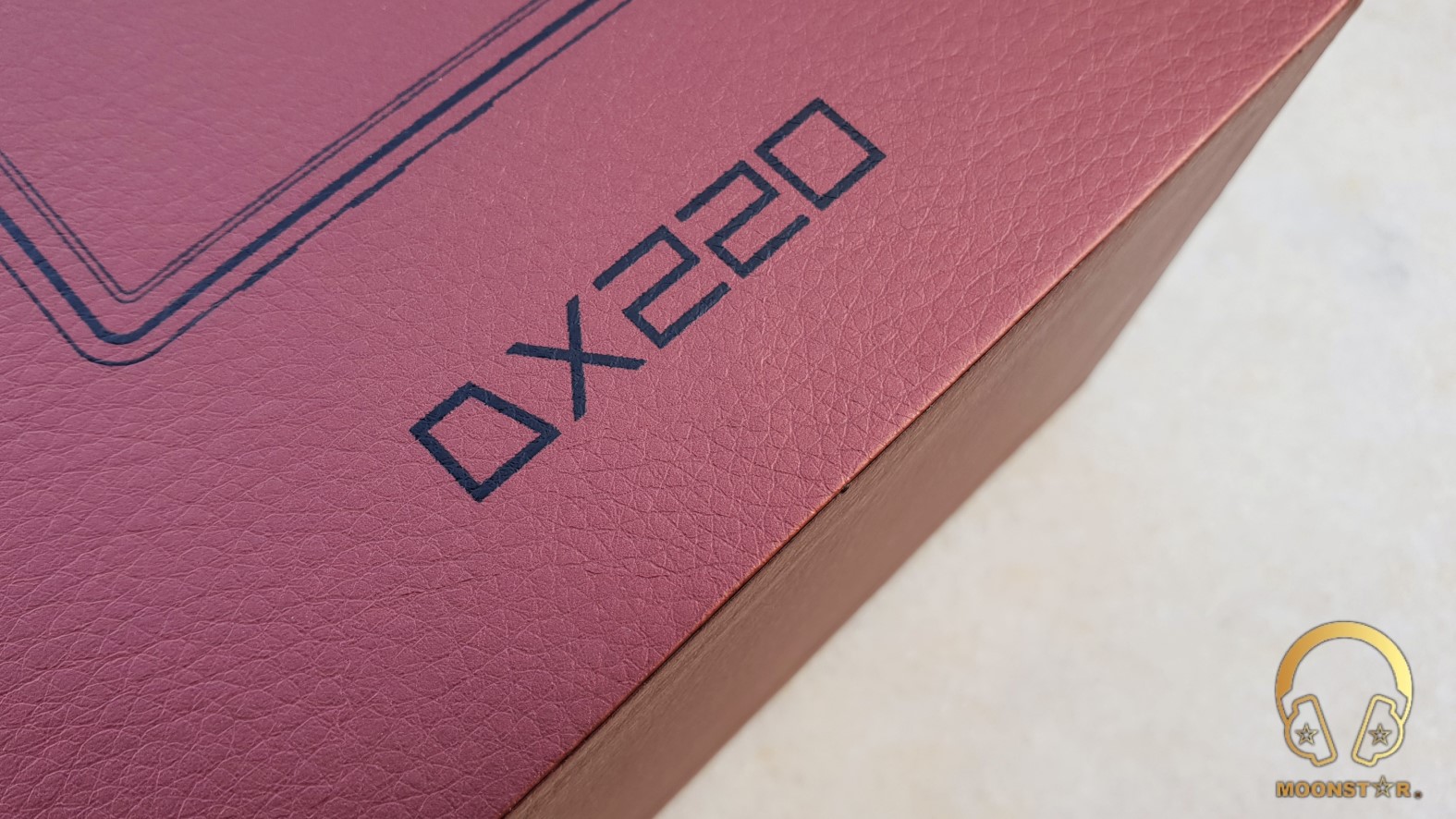
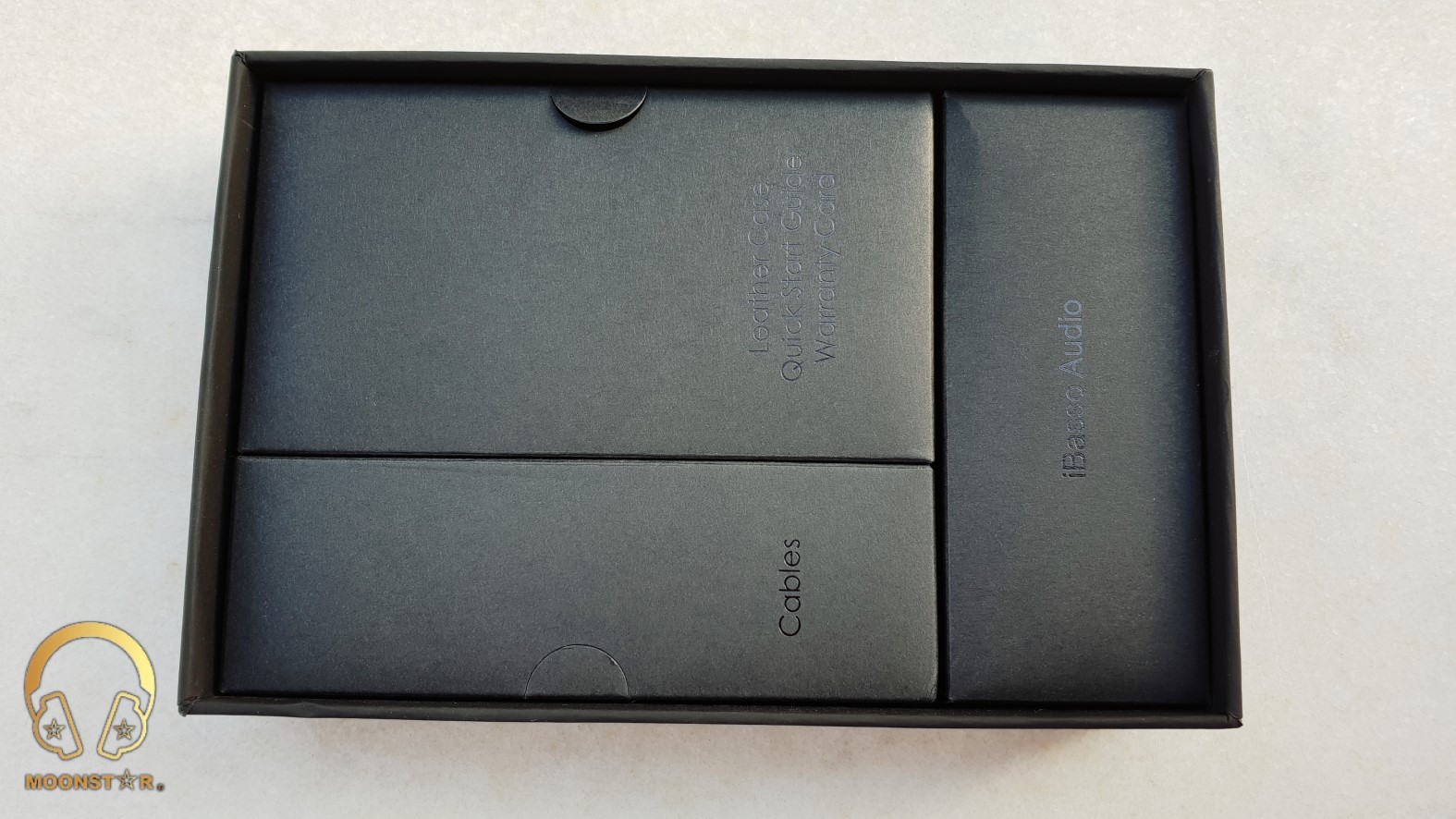
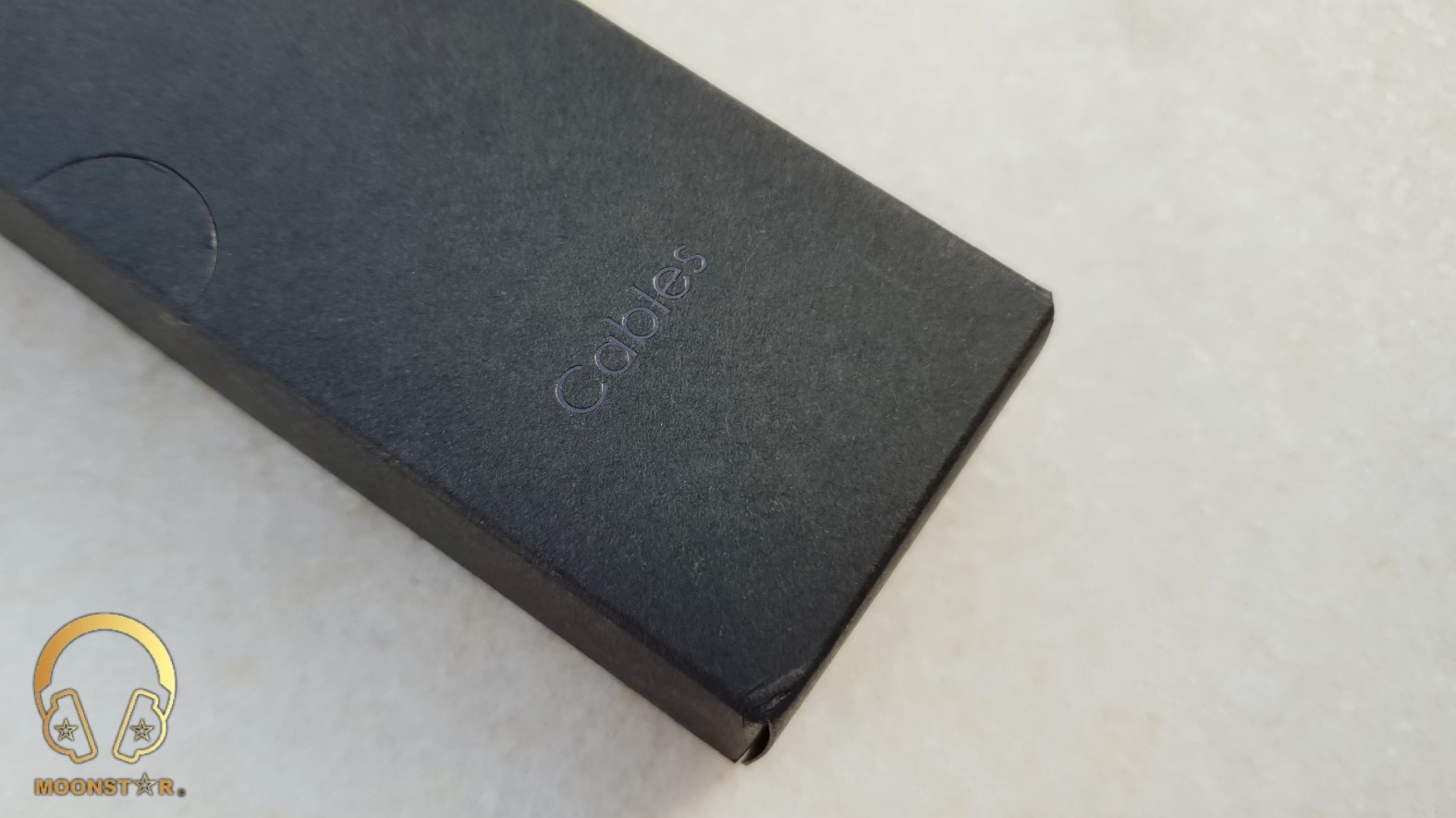
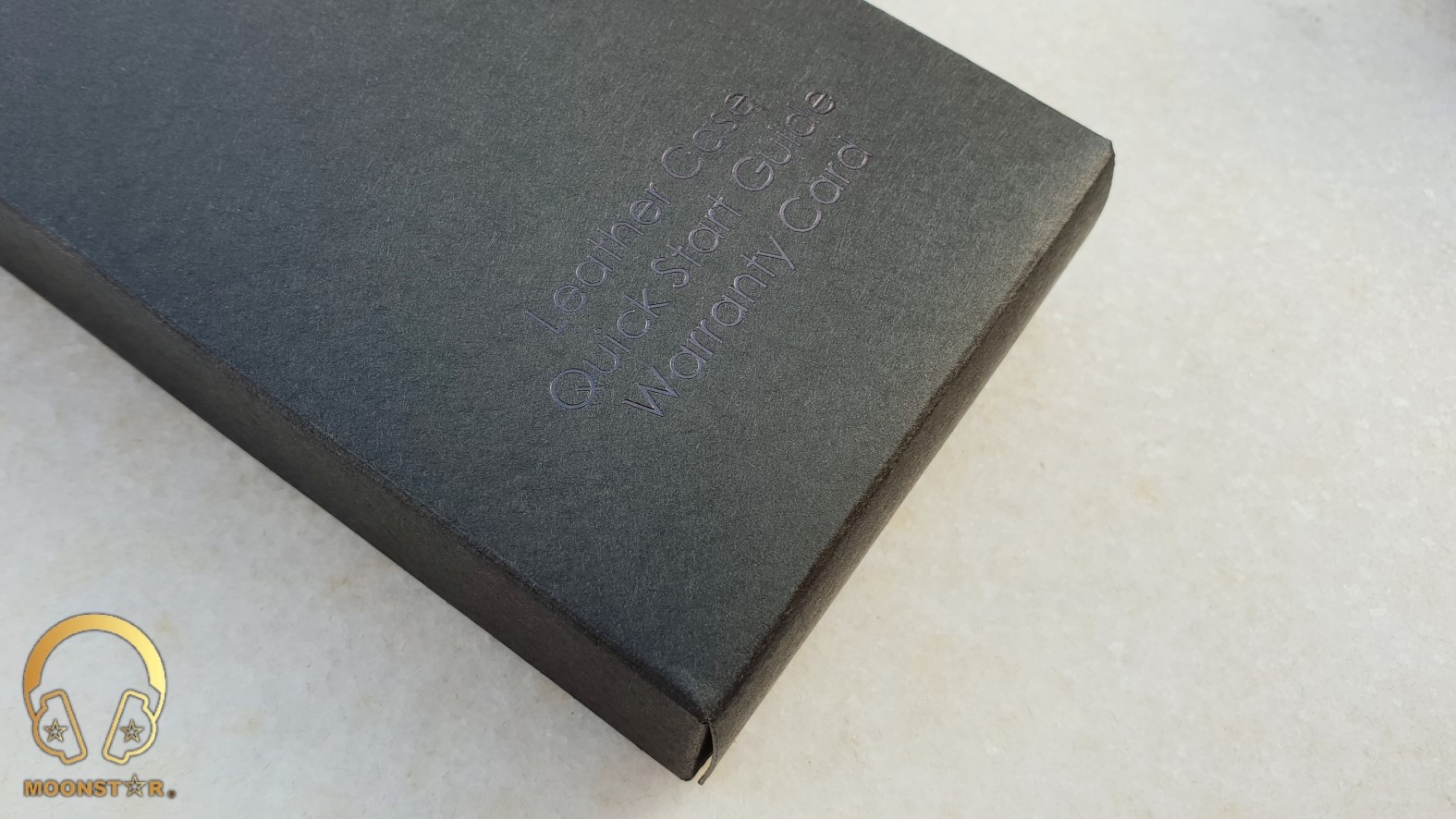
The leather case is in mustard color and has is of high quality workmanship. The inner surface of the case has some nice iBasso illustrations.
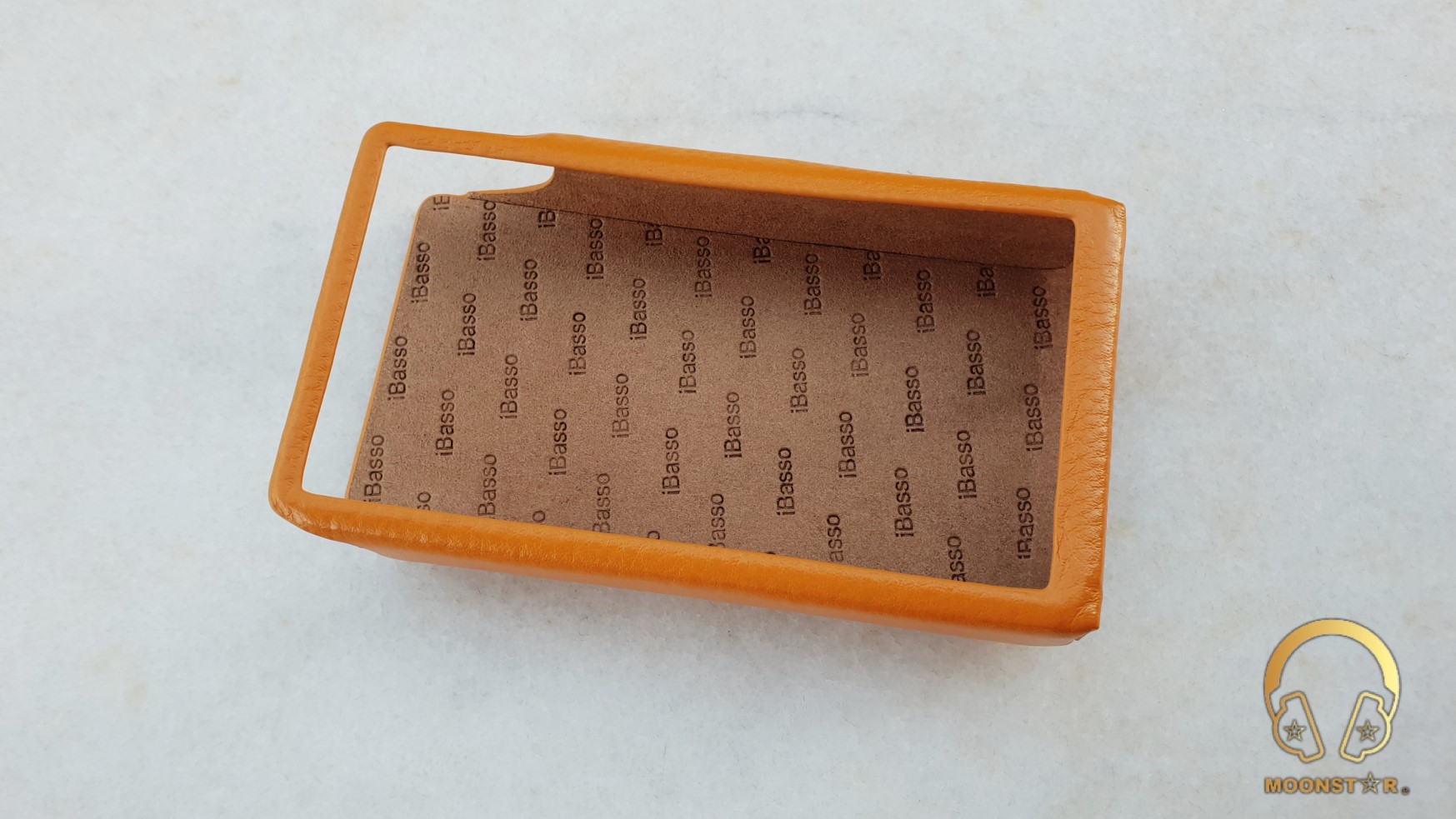

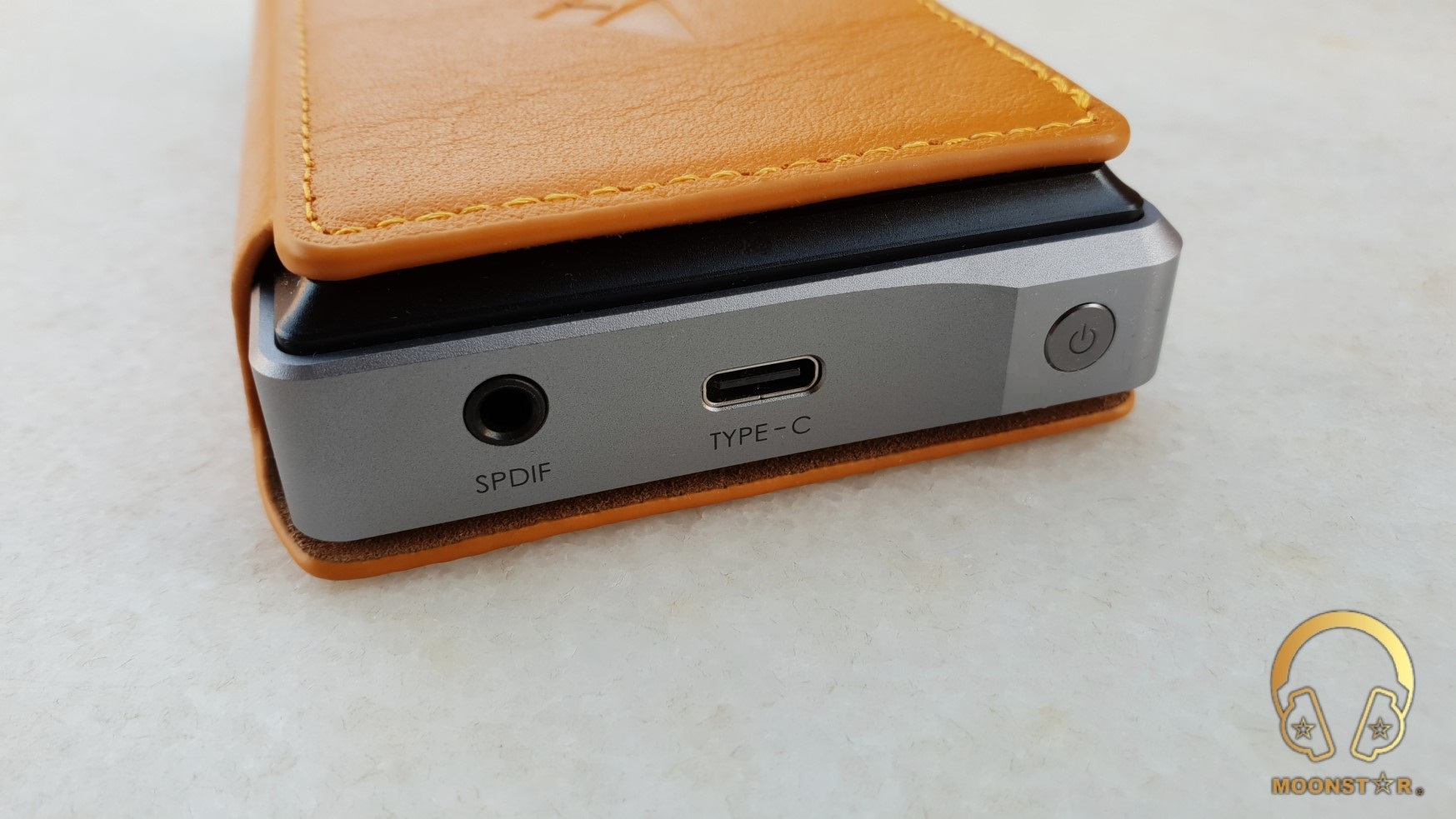
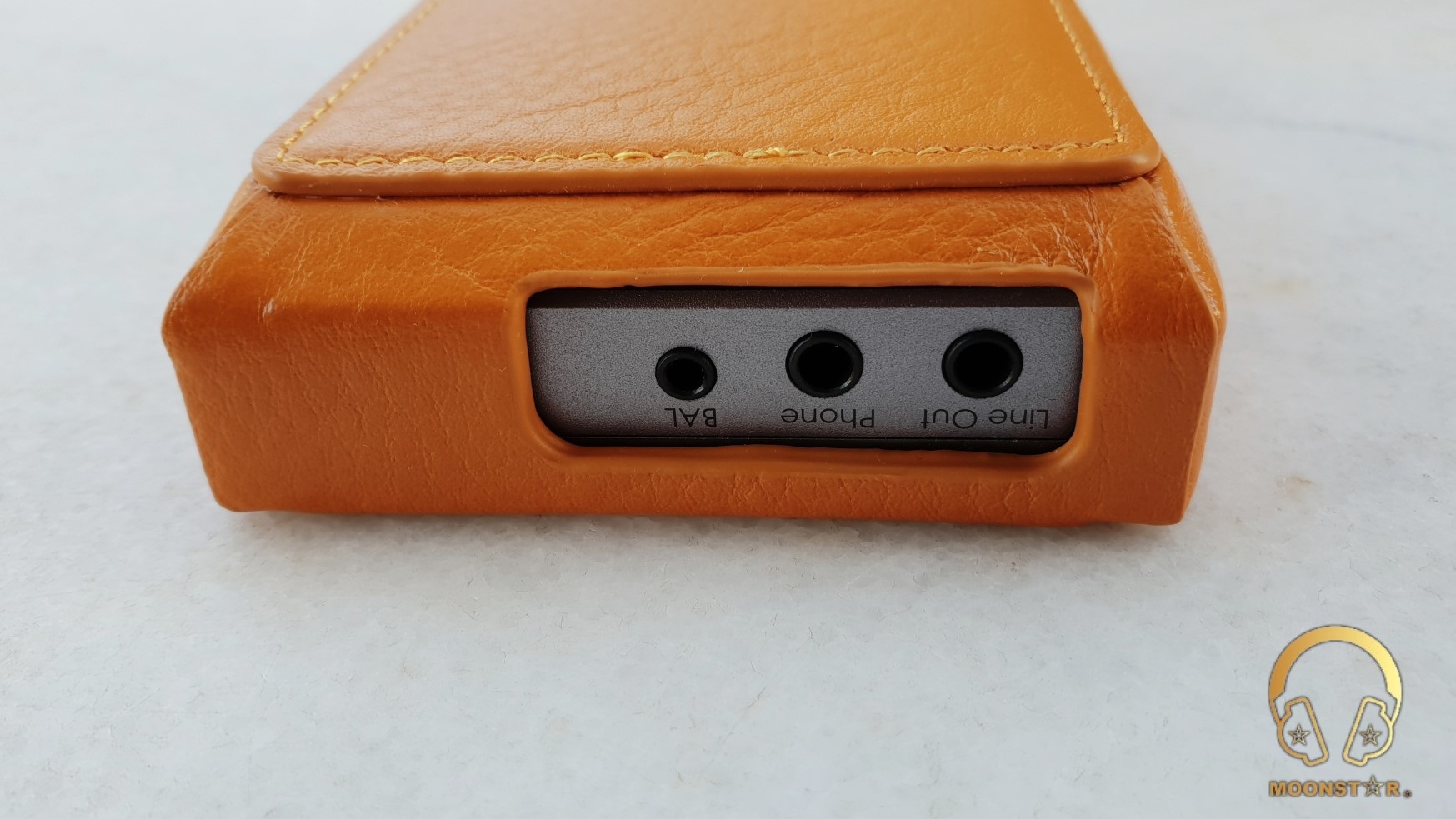
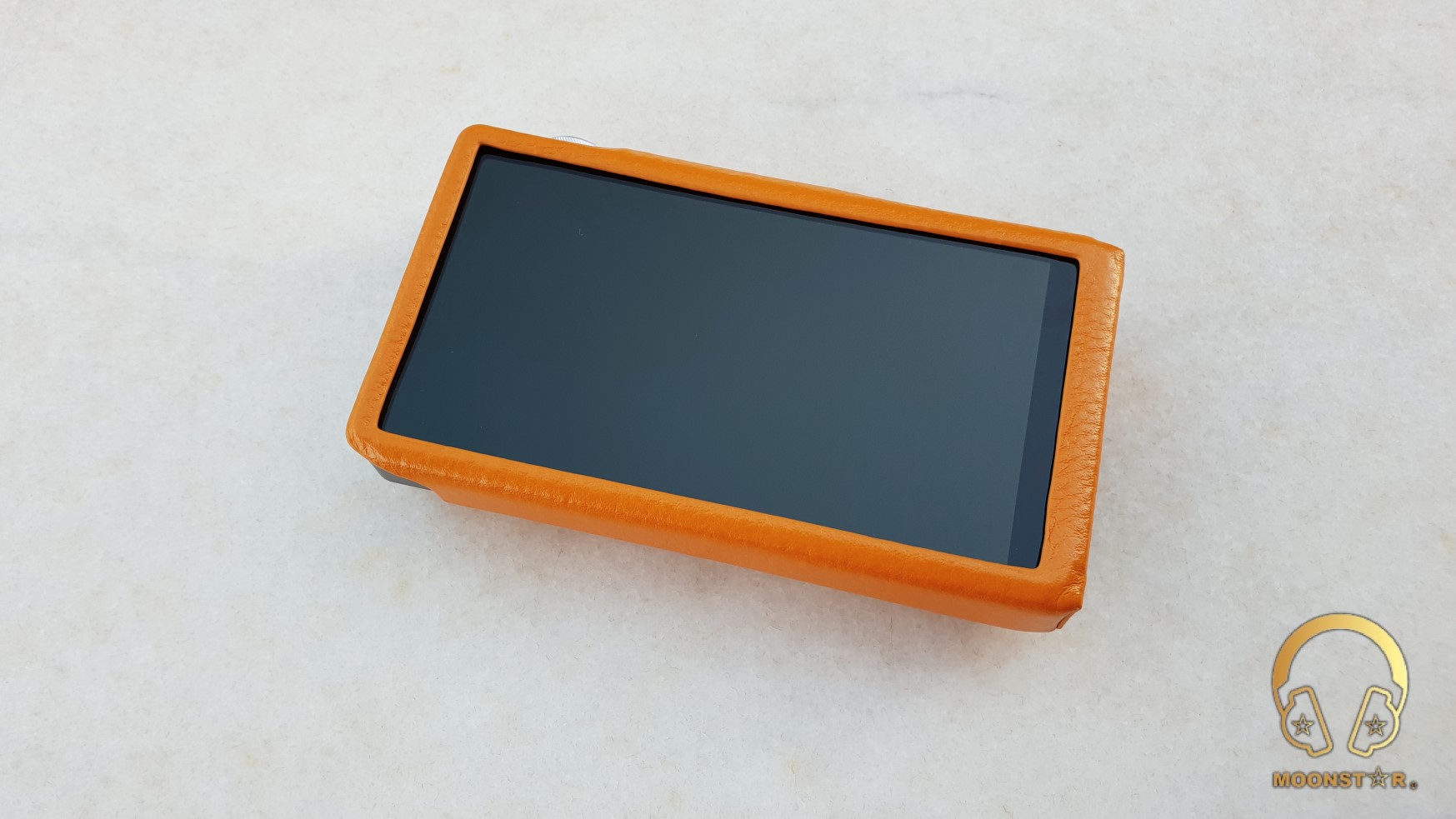
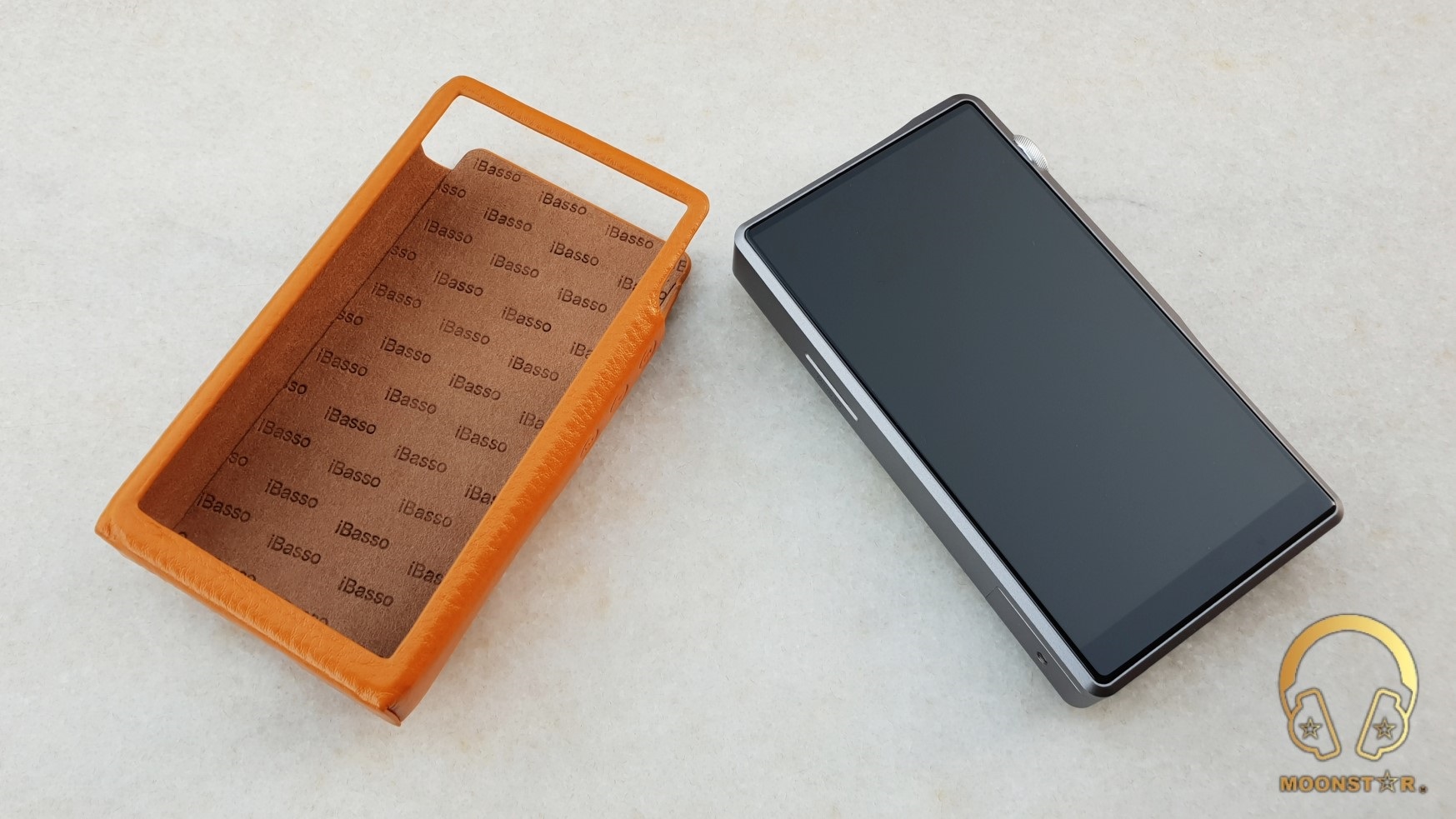
The extra burn-In cable which comes as standard accessories since the DX100 is a nice addition.
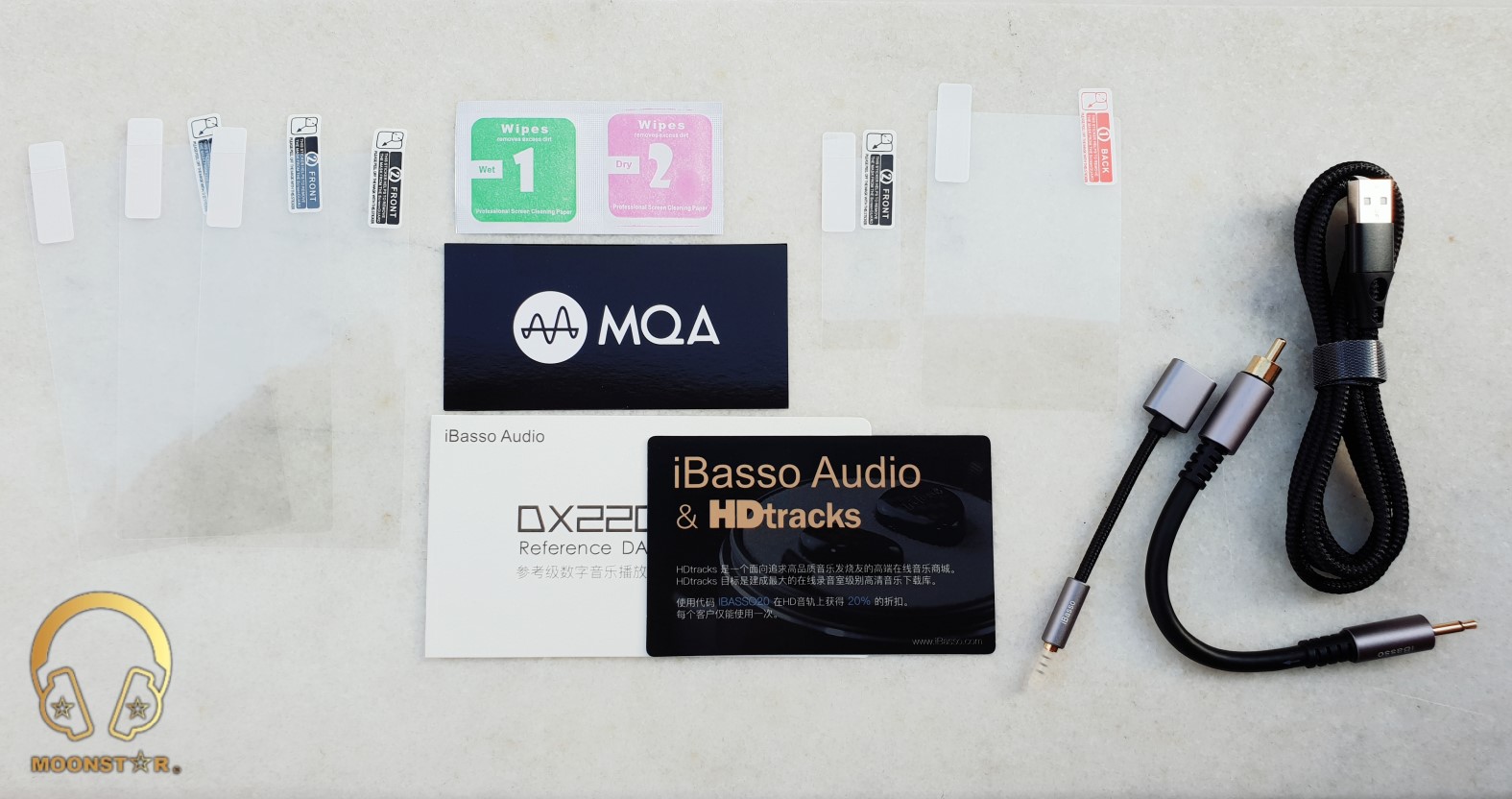

Design, Buttons and Build Quality:
The iBasso DX220 shares the same design language that we have seen with the DX200/DX200TI and DX150. The first main difference is the dimension of the DX220 (126mm * 70.5mm * 18.7mm), which has now less height and depth than the other mentioned players.
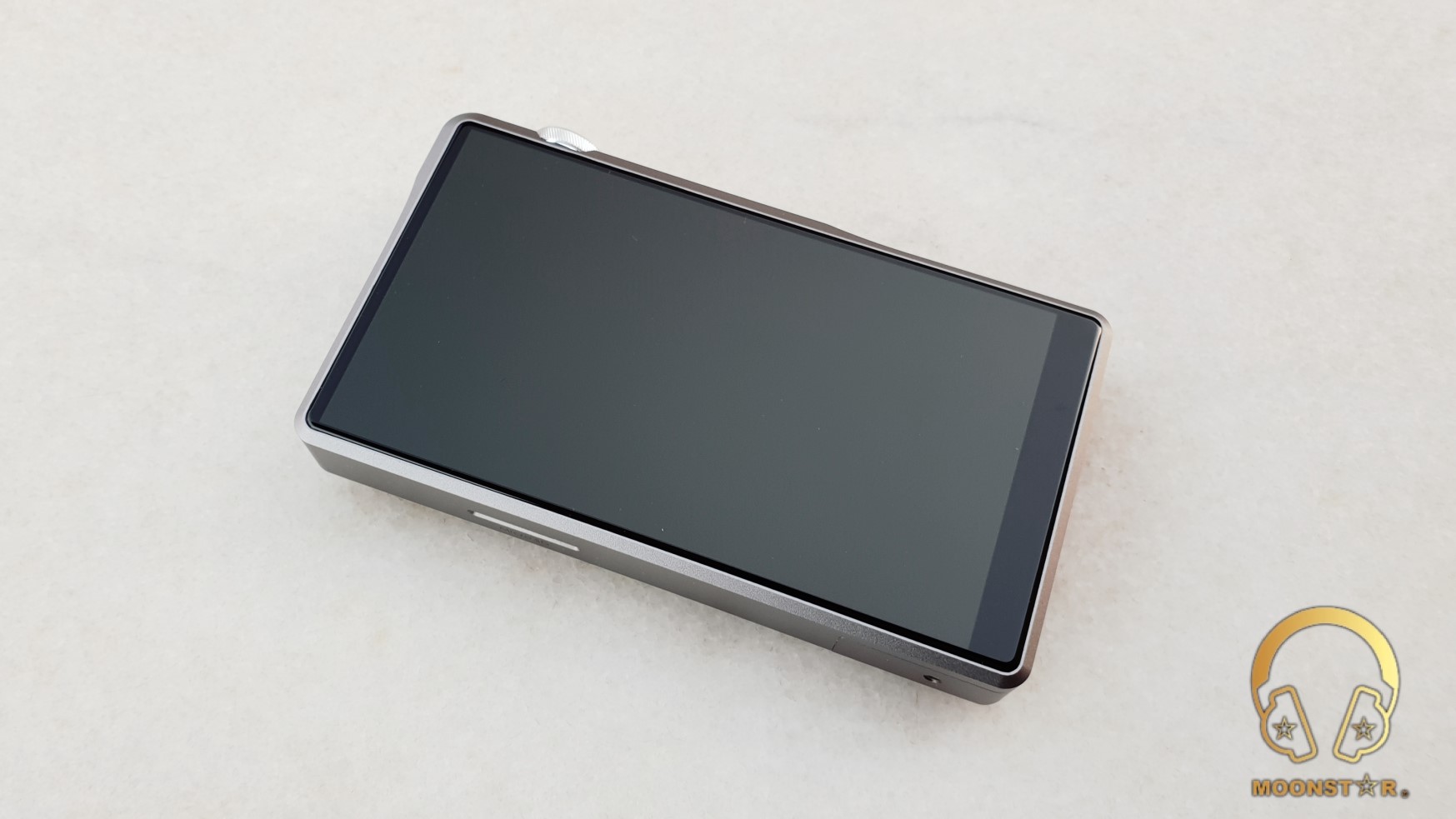
The second difference in appearance is the gorgeous looking 5.0” nearly bezel-less 1080P screen.
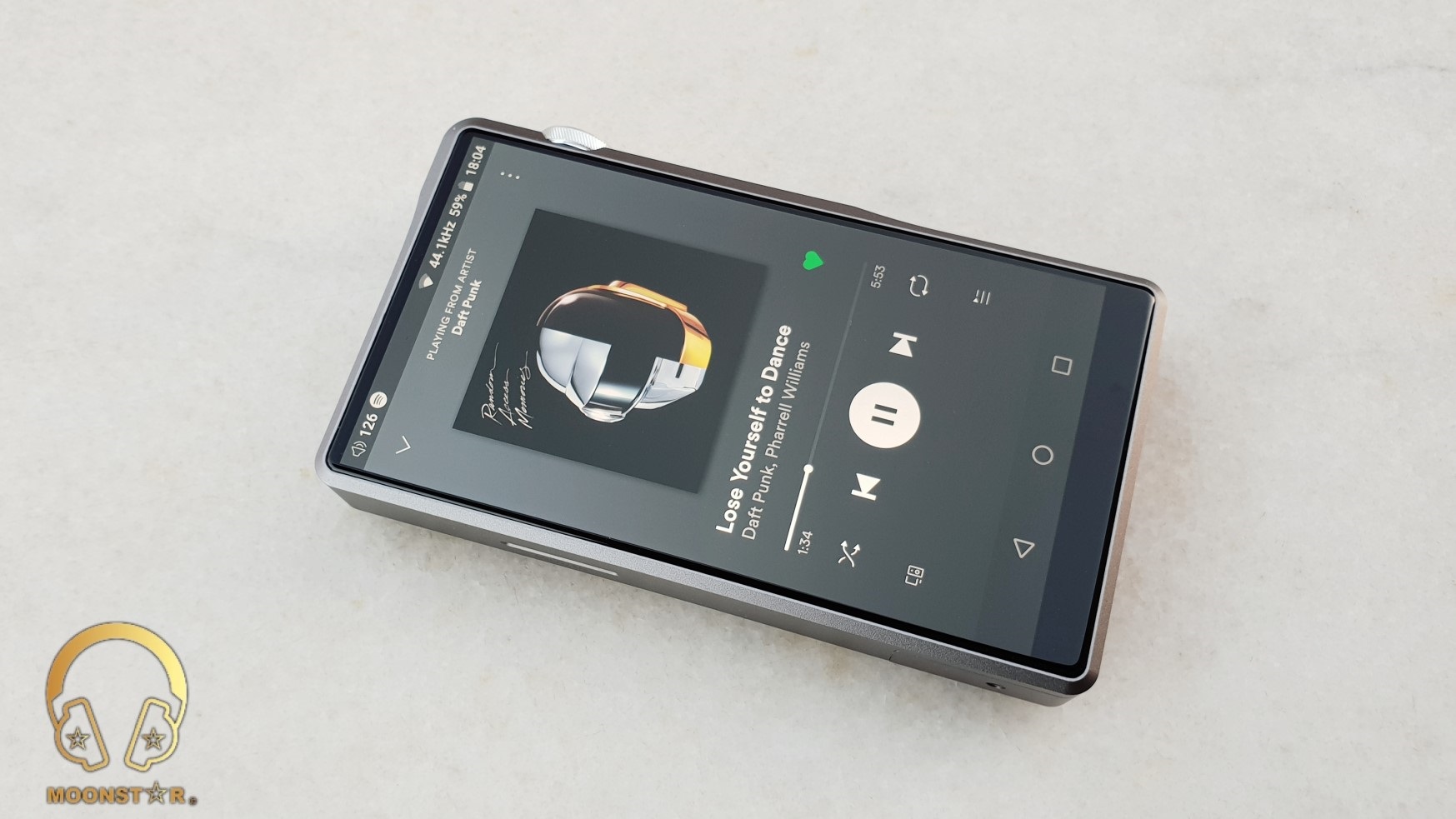
The third noticeable difference is the volume wheel which has a softer look and better esthetics.
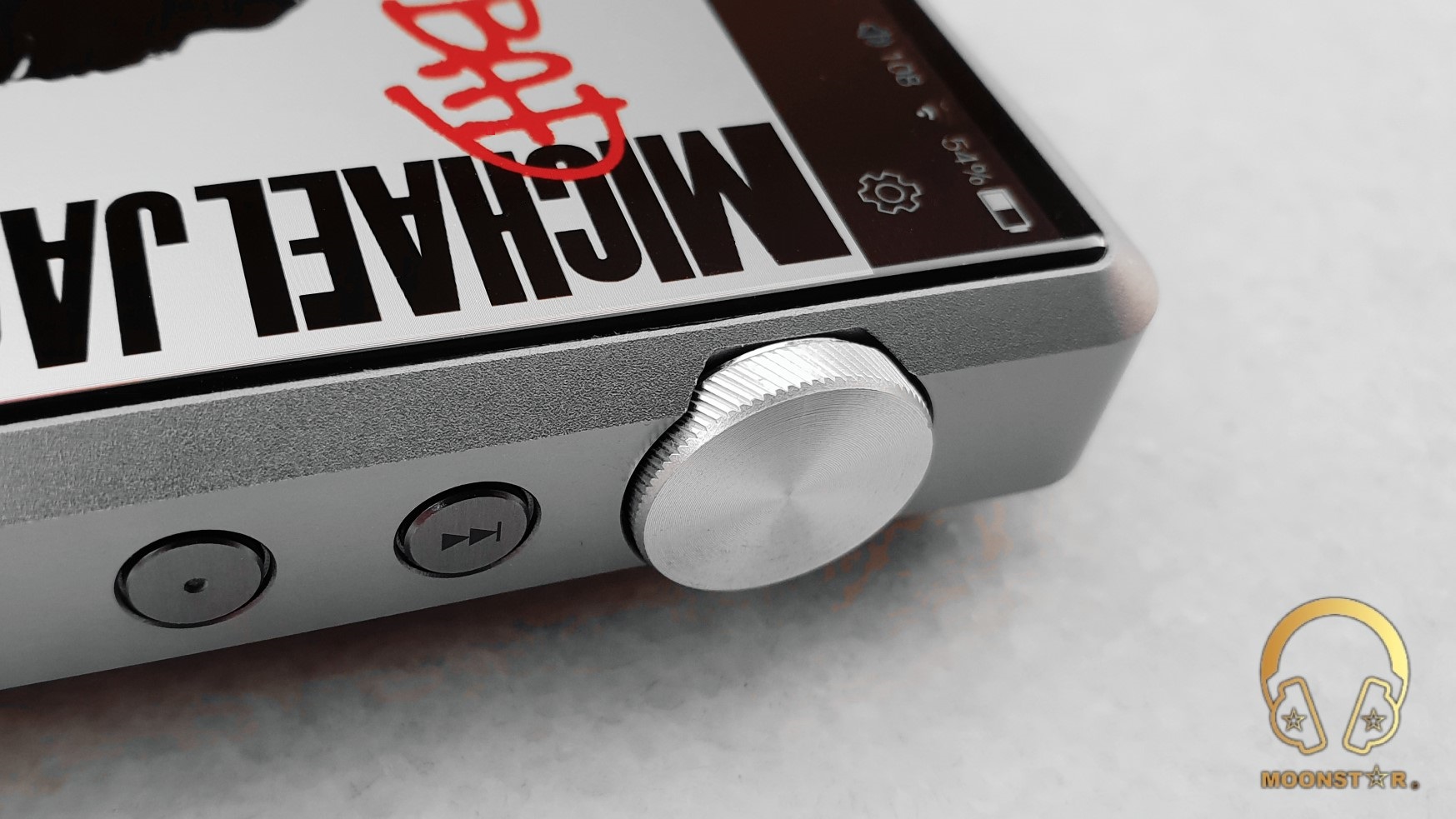
The main chassis of the DX220 is made of metal and is well made and doesn’t show any imperfections like gaps, burrs or any openness.
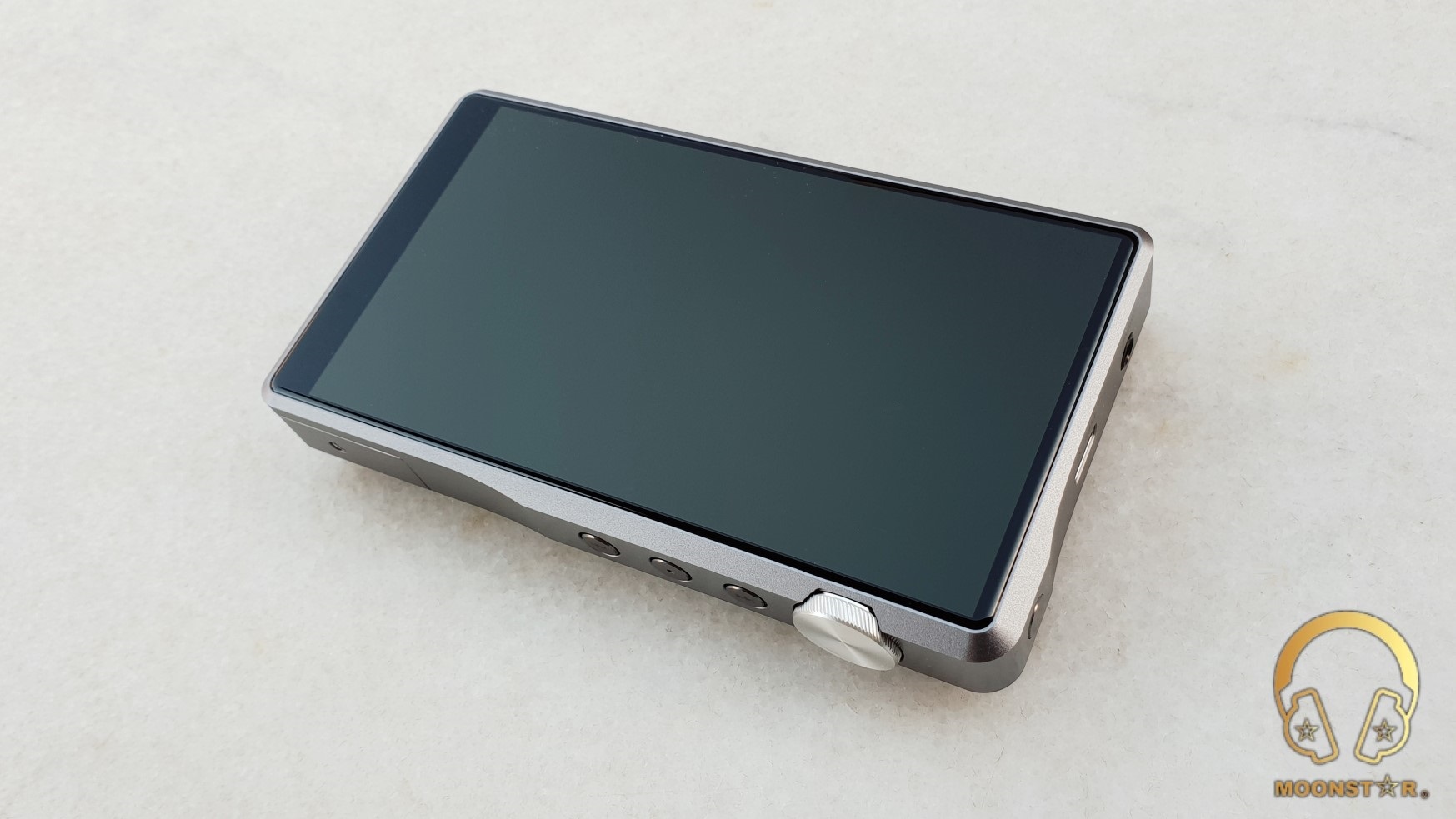
The back of the device is made of plastic and has pre installed corning glass protectors.

On the front of the device is the 5.0” 1920×1080 (1080P) OnCell screen of the company Sharp which is nearly bezel-less (87% screen ratio). The screen has a pixel density of 445 PPI which is pretty good for a DAP.
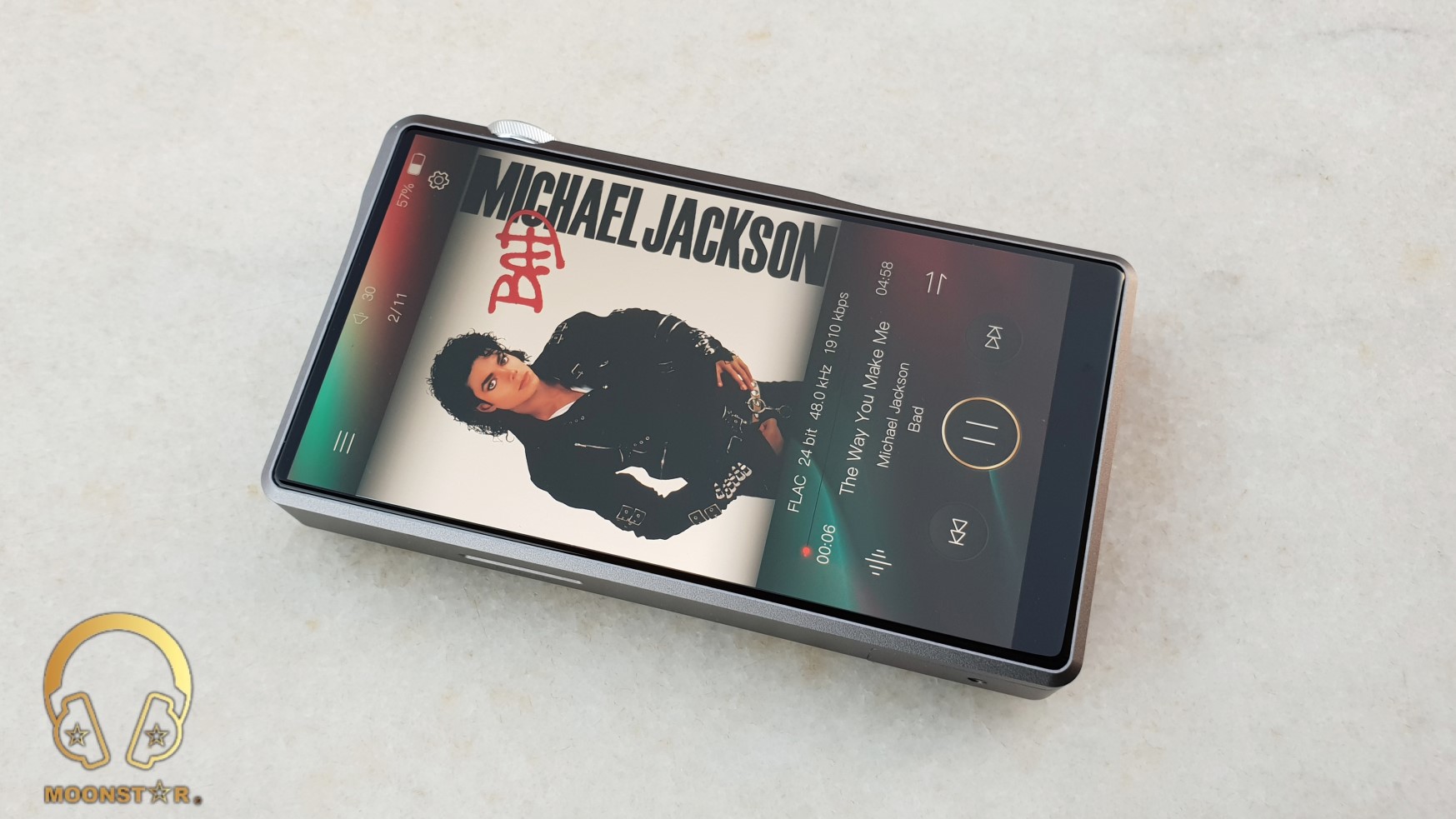
The corners of the screen have this nice 2.5D curve effect.
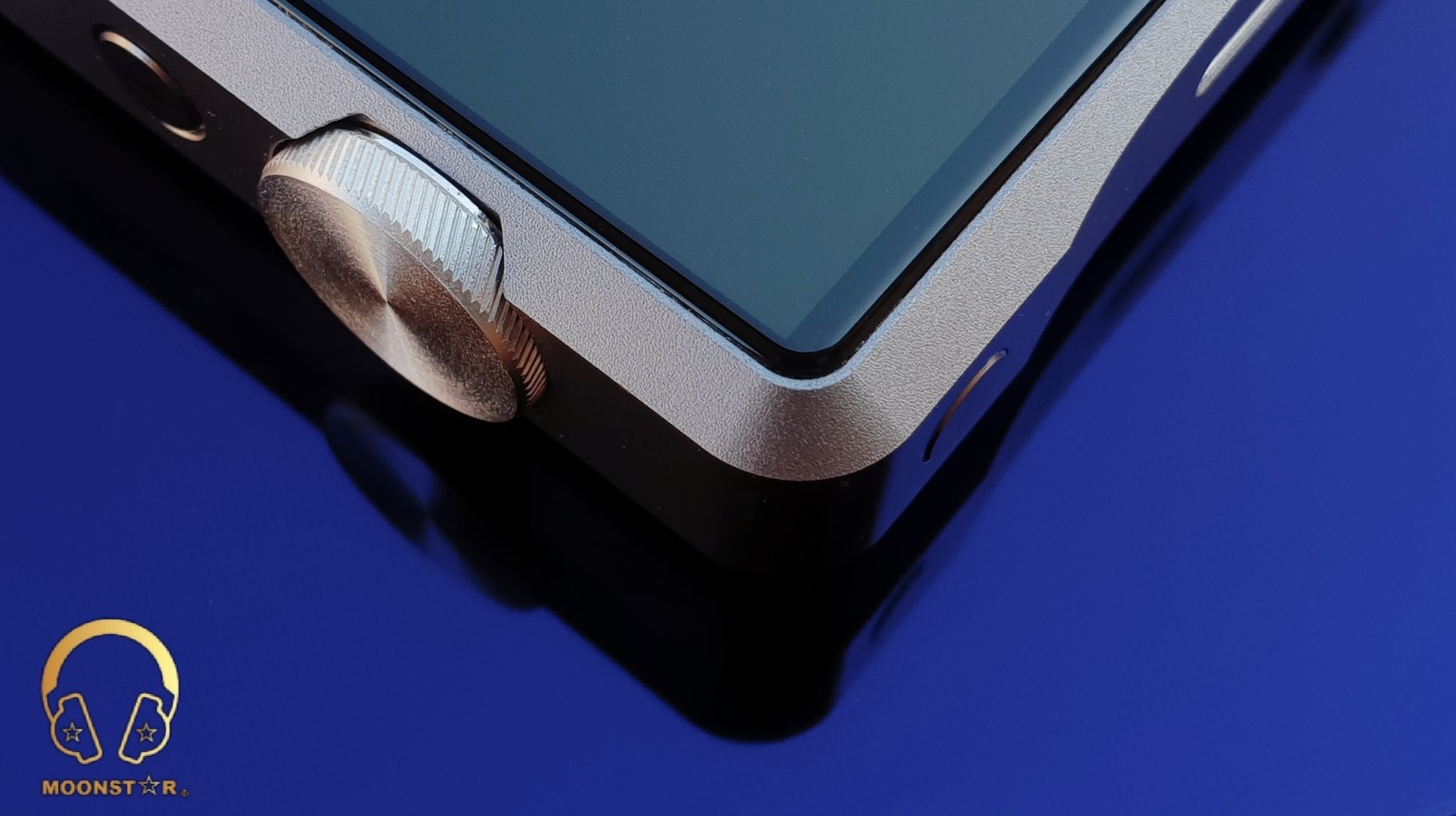
The screen is very bright (480cd/m2) and vibrant (features a 95% sRGB color gamut).
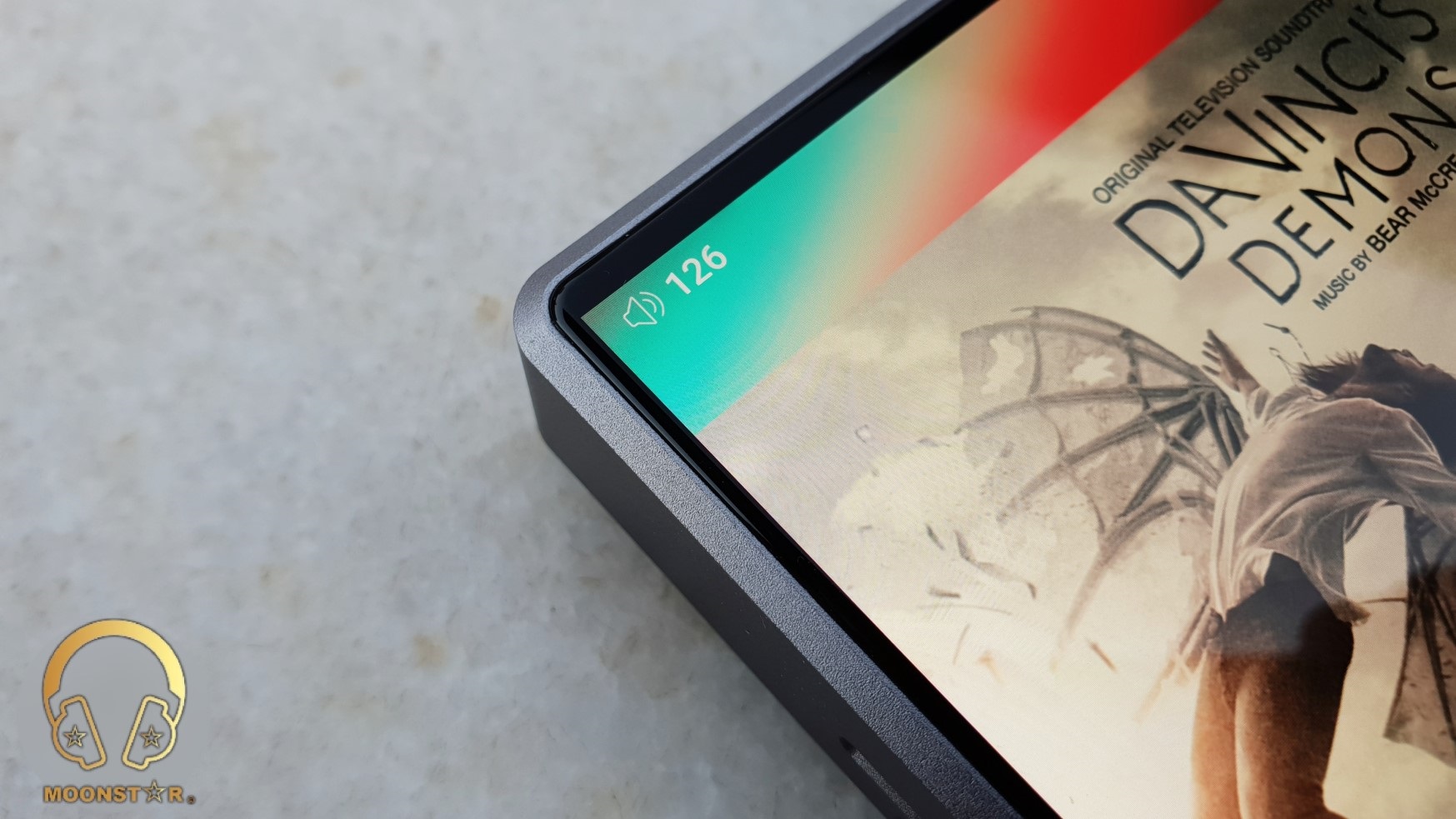
The left side of the DX220 is a single micro SD card slot for storage expansion which supports at least memory cards up to 2TB (MicroSD Cards in SDHC & SDXC format).
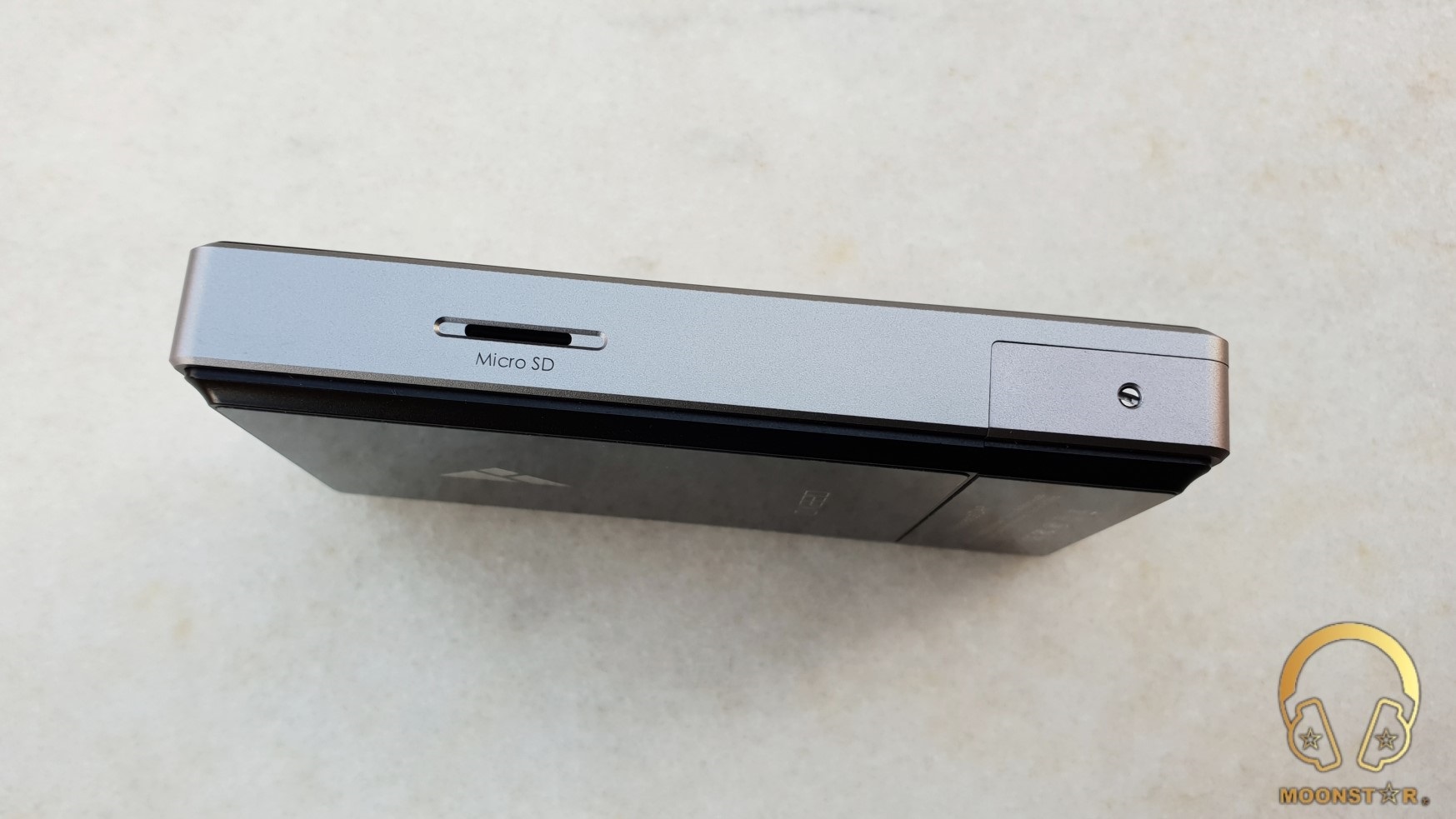
On the right side of the device are the Volume Control Wheel and the physical next/fast forward, play/pause and the previous/rewind buttons. Here is also one of the AMP Card fixing screws.
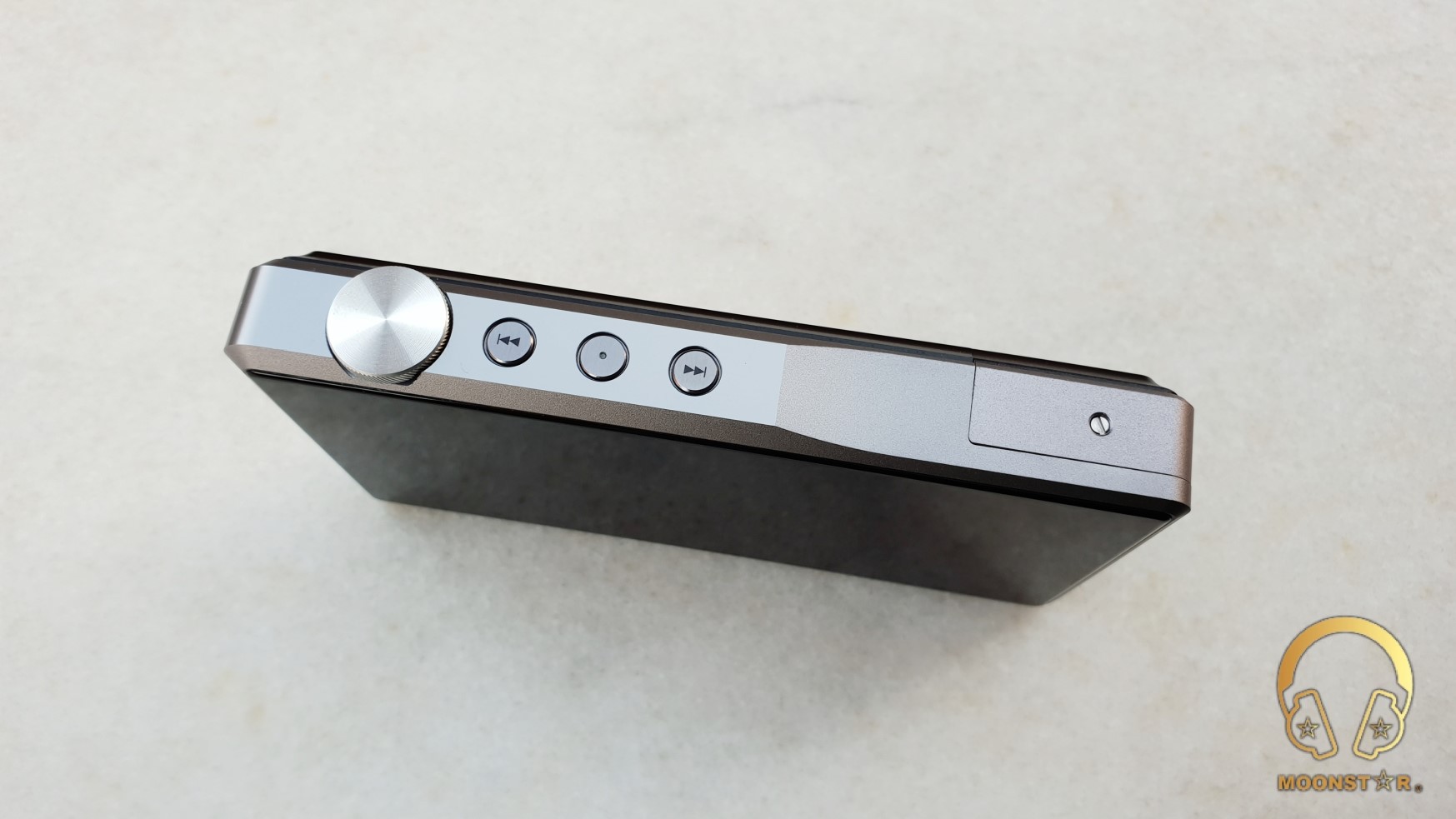
At the bottom of the iBasso DX220 are the inputs and outputs of the AMP1 MK2 amplification module. Those are the 3.5mm Line Out, the 3.5mm Phone Out and the 2.5mm Balanced Out (TRRS).
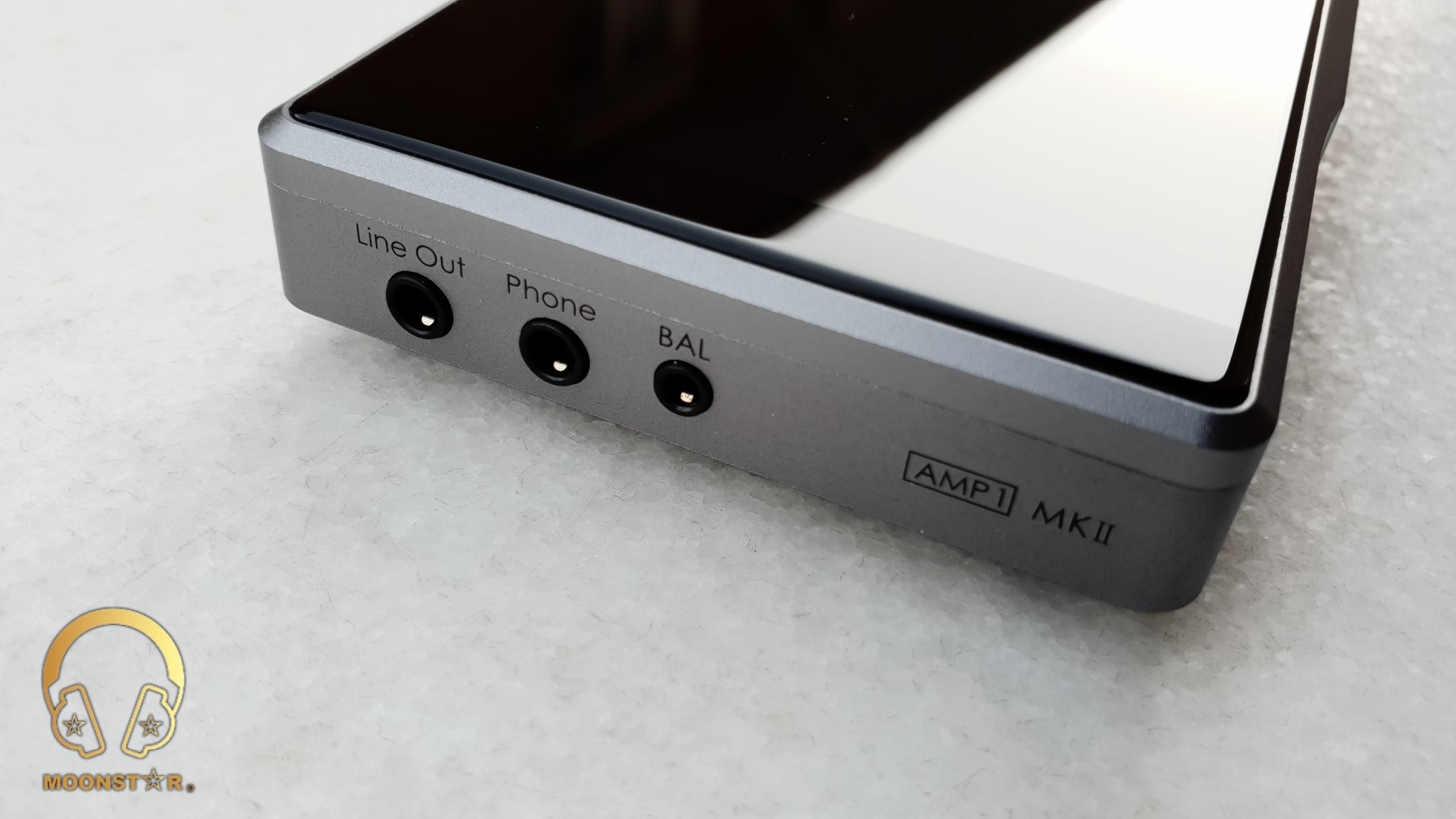
On the top of the device are the Optical/Coaxial Out (shared on the same sot) and the USB Type-C Digital Out and Charging port.
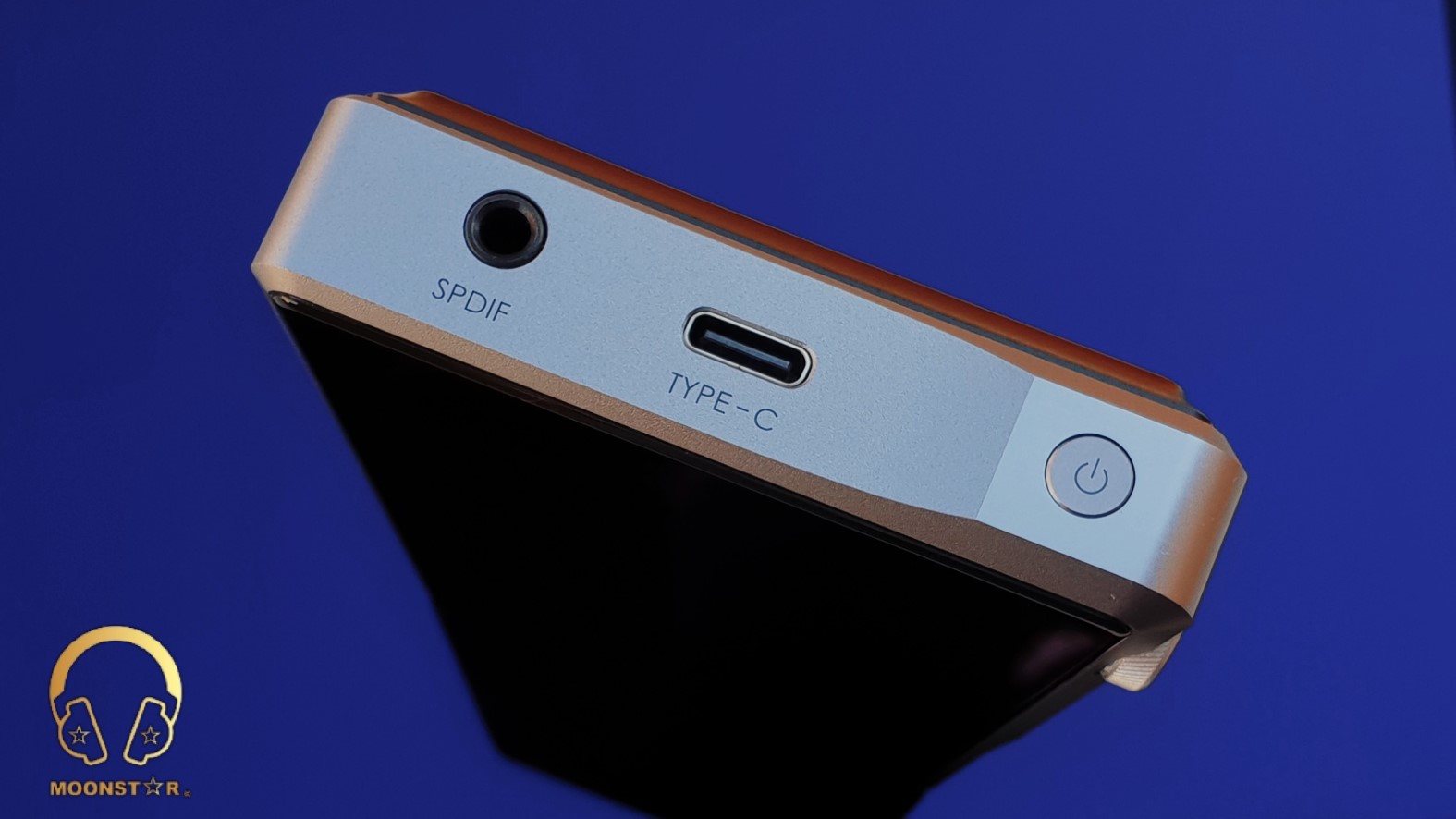
The back side of the device sports the iBasso Logo and DX220 branding. The AMP module which is also located at the bottom of the device sports some certification detail and the labeling “Reference DAP”.

Technical Specifications:
- Operating System : Android 8.0
- CPU : 8 Core (RockChip)
- RAM : 4GB LPDDR3
- ROM : 64 GB (55.2 GB Free – 8.8GB Reserved for the OS)
- Screen : 5.0” 1920*1020 (1080P) Sharp OnCell Screen
- DAC : Dual ES9028Pro DAC Chip
- Analog Outputs : 3.5mm Line Out, 3.5mm Phone Out, 2.5mm Balanced Out (TRRS)
- Digital Out : SPDIF/Coaxial, Optical Out, USB Type-C
- XMOS Receiver : XMOS USB Receiver for Native DSD Support (up to 512x)
- Battery : 4400mAh 3.8V Li-Polymer battery
- Battery Life : 8h Single-Ended (Normal Gain)
- Size : 126mm * 70.5mm * 18.7mm
- Weight : 240g
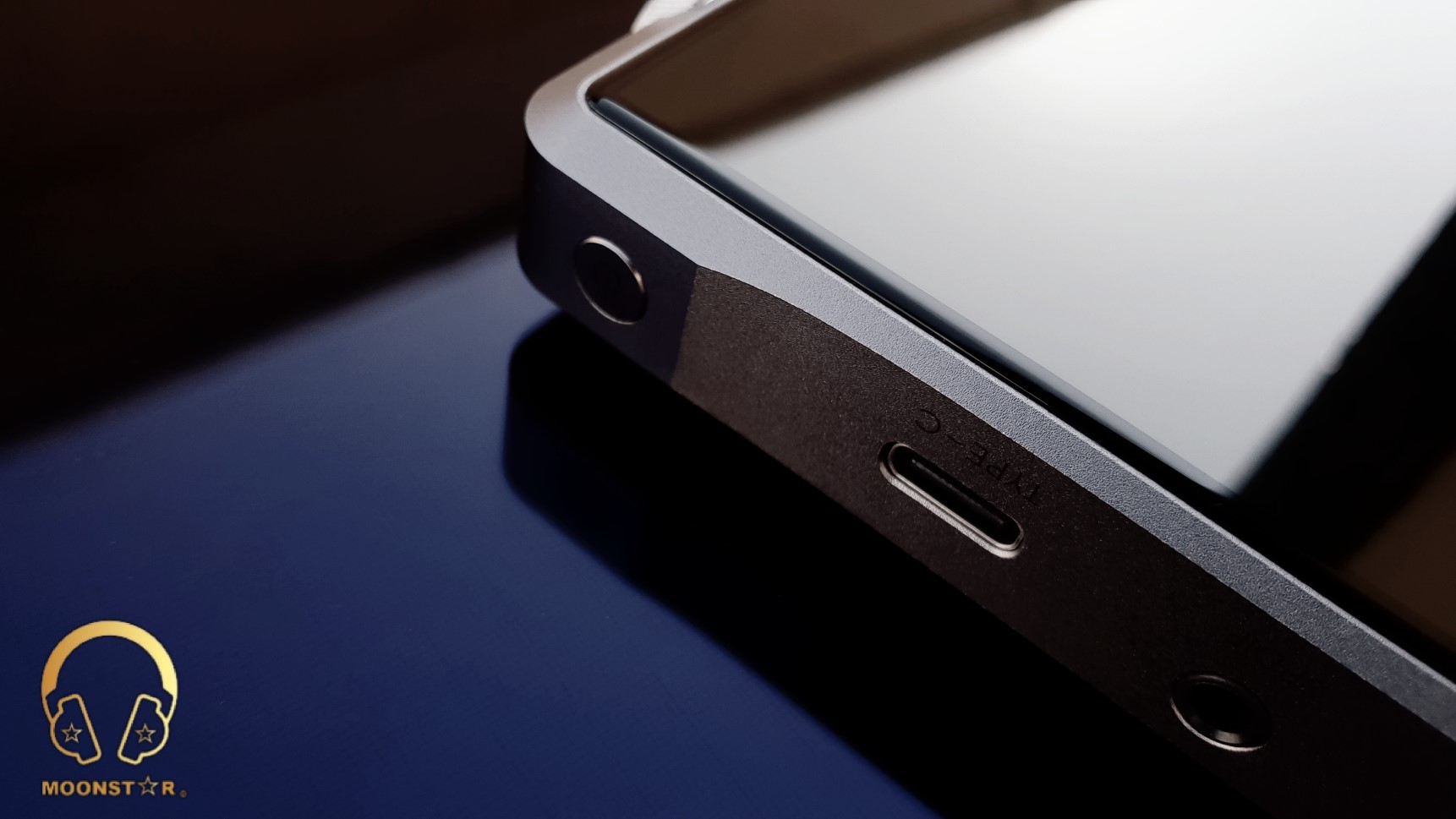
Supported Audio and Bluetooth Formats/Codec’s:
The iBasso DX220 supports almost any traditional and modern audio format including MQA. The list of supported formats is as follows;
- MQA, APE, FLAC, WAV, WMA, AAC, ALAC, AIFF, OGG, MP3, DSF, DFF, DXD, CUE, ISO
- PCM: 8kHz – 384kHz (8/16/24/32Bit)
- Native DSD: DSD64/128/256/512
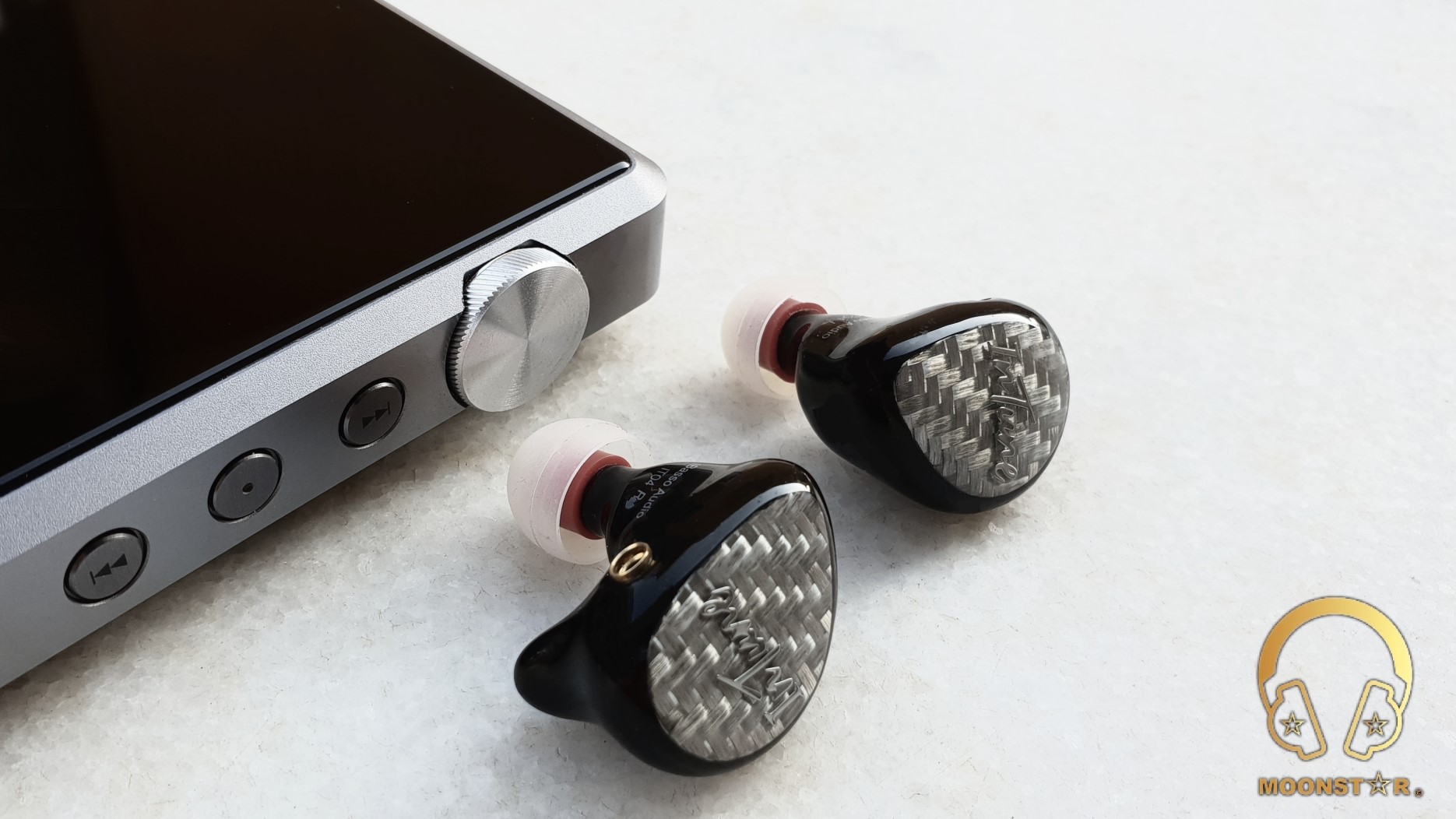
1. Hardware:
The iBasso DX220 is well engineered Digital Audio Player (DAP) with some nice hardware specs to achieve a Reference type High Quality Sound.
A) DAC (Digital to Analog Converter):
The iBasso DX220 utilizes a Dual Sabre ES9028pro DAC Chip (Digital to Analog Converter) which has 8 DACs per side. Each ES9028pro uses the 8 DACs in parallel for each channel. This design optimizes the THD+N, Signal to Noise Ratio (SNR), Dynamic Range and Crosstalk performance of the DX220.
The result is a THD+N of 0.00018%/-114dB, SNR of 125dB and a Crosstalk of -119dB.
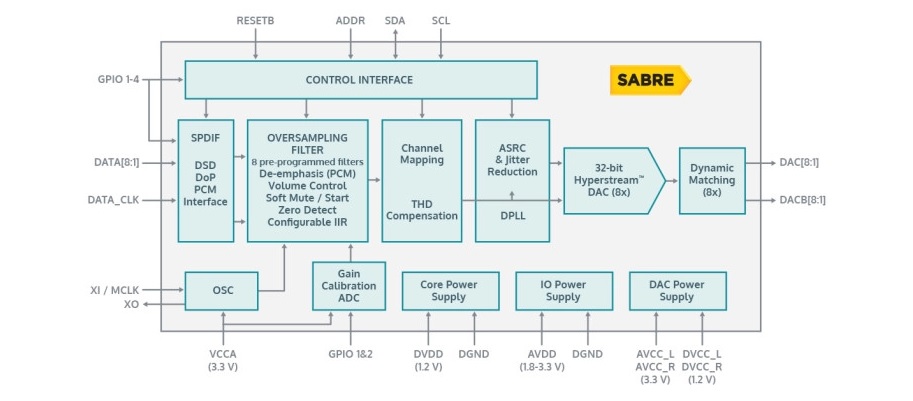
B) USB DAC:
The DX220 supports USB DAC function and can work with your Windows PC, MAC Computer and Linux Computer. A MAC and Linux device doesn’t need any driver installation, while you need to download and install the USB DAC Driver for your Windows PC under the following link:
http://www.ibasso.com/down.php
The XMOS XU208 Chip of the DX220 supports up PCM formats up to 32bit/384kHz and
Native DSD up to 512x.
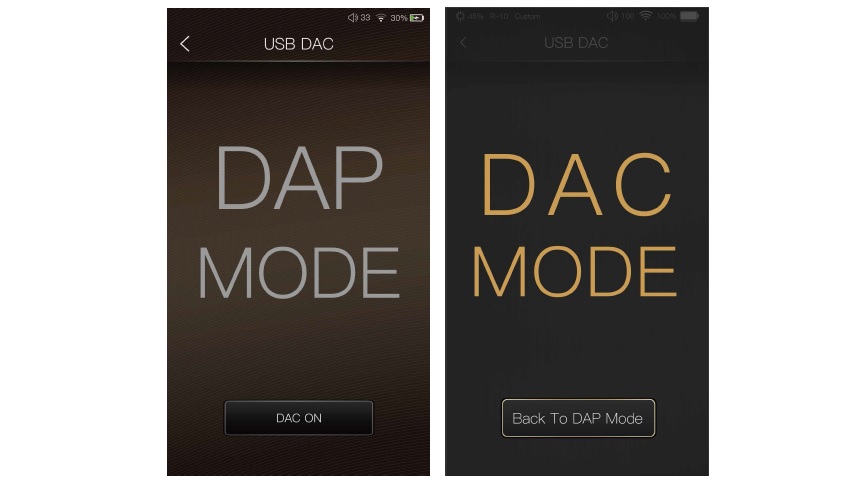
C) CPU/RAM/ROM:
The iBasso DX220 features a 8-Core (Octa-Core) ARM CPU, 4GB’s of LPDDR3 type RAM and 64GB of ROM. The 8.8GB of the internal storage are reserved for the Operating System (OS) while 55.2 GB’s are free to store your music files or for the installation of third party applications.
You can also expand the storage capacity via MicroSD cards with a capacity up to 2TB.
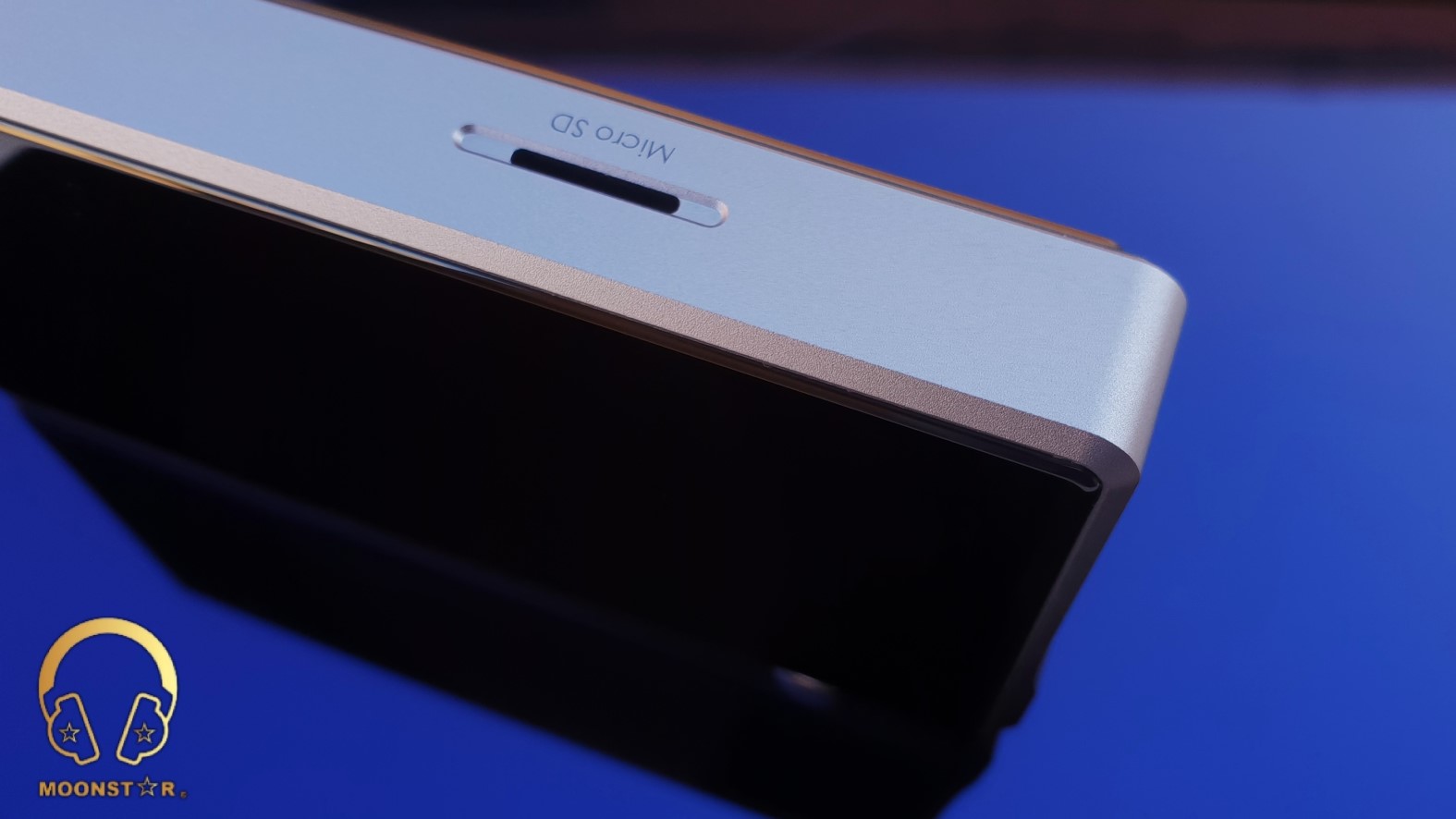
D) Wireless Connectivity:
The iBasso DX220 has a build in Wi-Fi antenna which supports the 802.11 b/g/n/ac protocols and 2.4GHz and 5 GHz frequency standards.
The iBasso DX220 is the first Portable Player to support two-way Bluetooth 5.0 audio transmission and has native LDAC and Aptx support, which means that you can send and receive your audio from/to external devices like Headphones/Speakers/Phones/Tablets etc.
E) Replaceable AMP Card Design:
The iBasso DX220 comes standard with the AMP1 MKII Amplifier Card which can be replaced with other AMP Cards that iBasso currently offers.
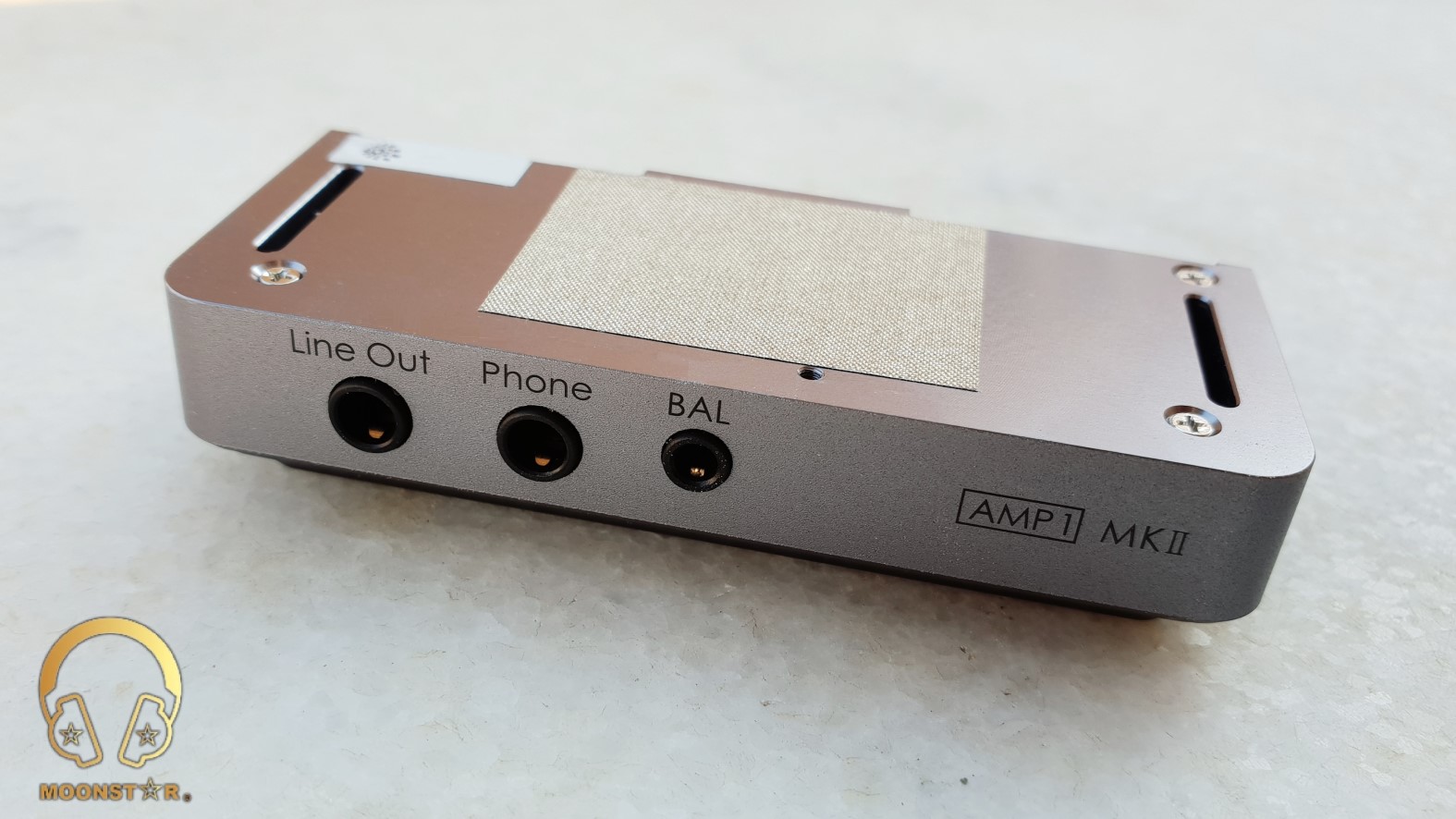
Those are the AMP3, AMP5, AMP8 and the AMP9. All AMP Cards designed for the DX series are backwards and forward compatible, which means that you can use the AMP Card of the DX150 and DX200 also with the DX220 and vice versa.
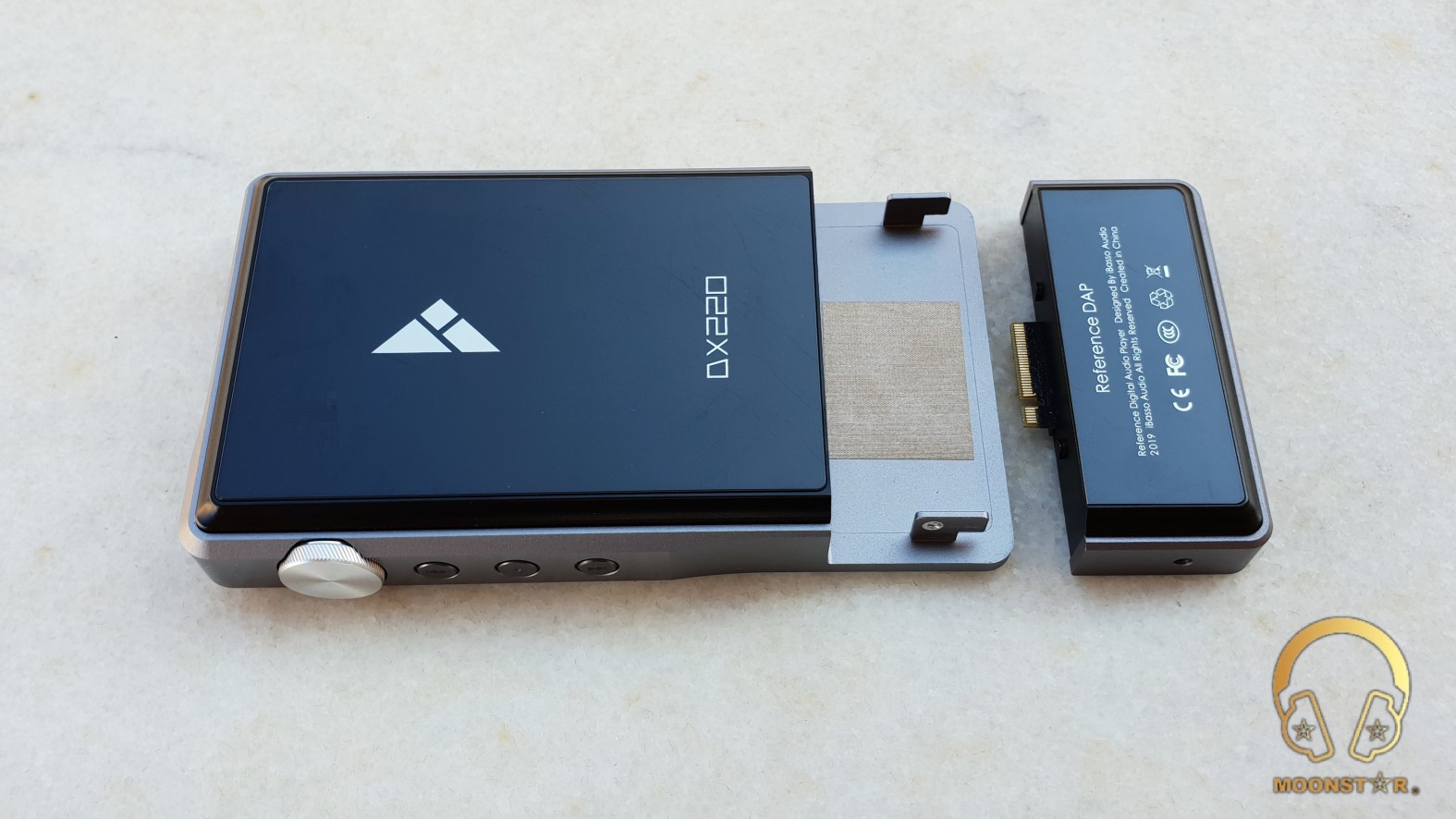

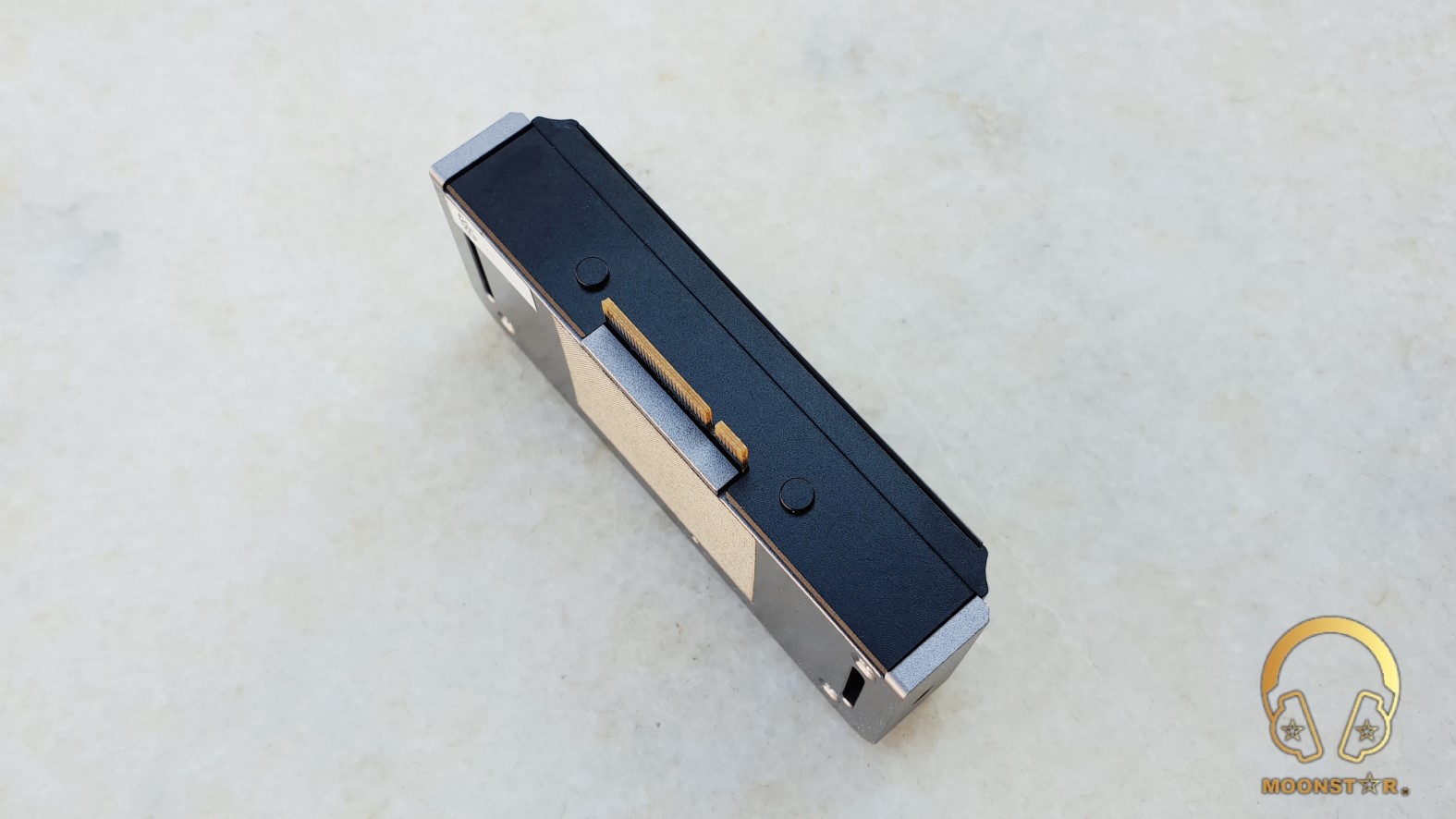
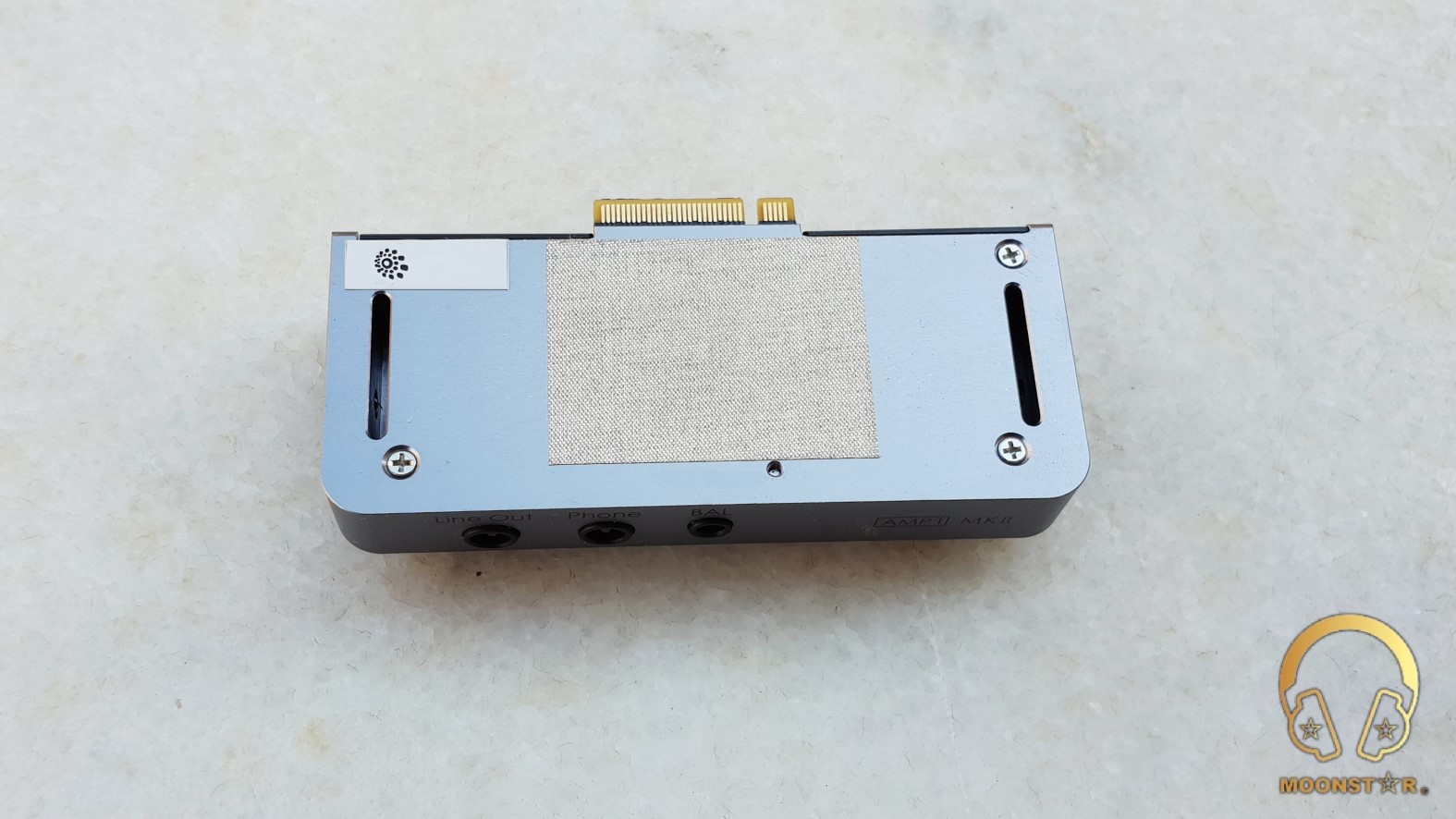
Here are some technical specifications;
3.5mm Single Ended Output (TRS):
- Output Voltage : 3.1Vrms
- Frequency Response : 10HZ-45KHZ+/-0.3dB
- SNR : 123dB
- THD+N : -0.00031% (no load, 1.8Vrms) -0.00035% (32Ω load, 1.8Vrms)
- Crosstalk : -117dB
2.5mm Balanced Output (TRRS):
- Output Voltage: 6.2Vrms
- Frequency Response: 10HZ-45KHZ+/-0.3dB
- S/N: 125dB
- THD+N: -0.00018% (no load, 3Vrms) -0.0002% (32Ω load, 3Vrms)
- Crosstalk: -119dB
3.5mm Line Output:
- Output Voltage : 6.2Vrms
- Frequency response : 10HZ-45KHZ+/-0.3dB
- SNR : 125dB
- THD+N : -0.00018% (no load, 3Vrms)
- Crosstalk : -119dB
2. Software / GUI:
A) Android:
The iBasso DX220 is a Digital Audio Player with Android OS same as the DX200 & DX150 which is slightly customized by the iBasso software team. The actual Android OS Version is 8.1 Oreo and the speed of the GUI is snappy and gets better after every new update.
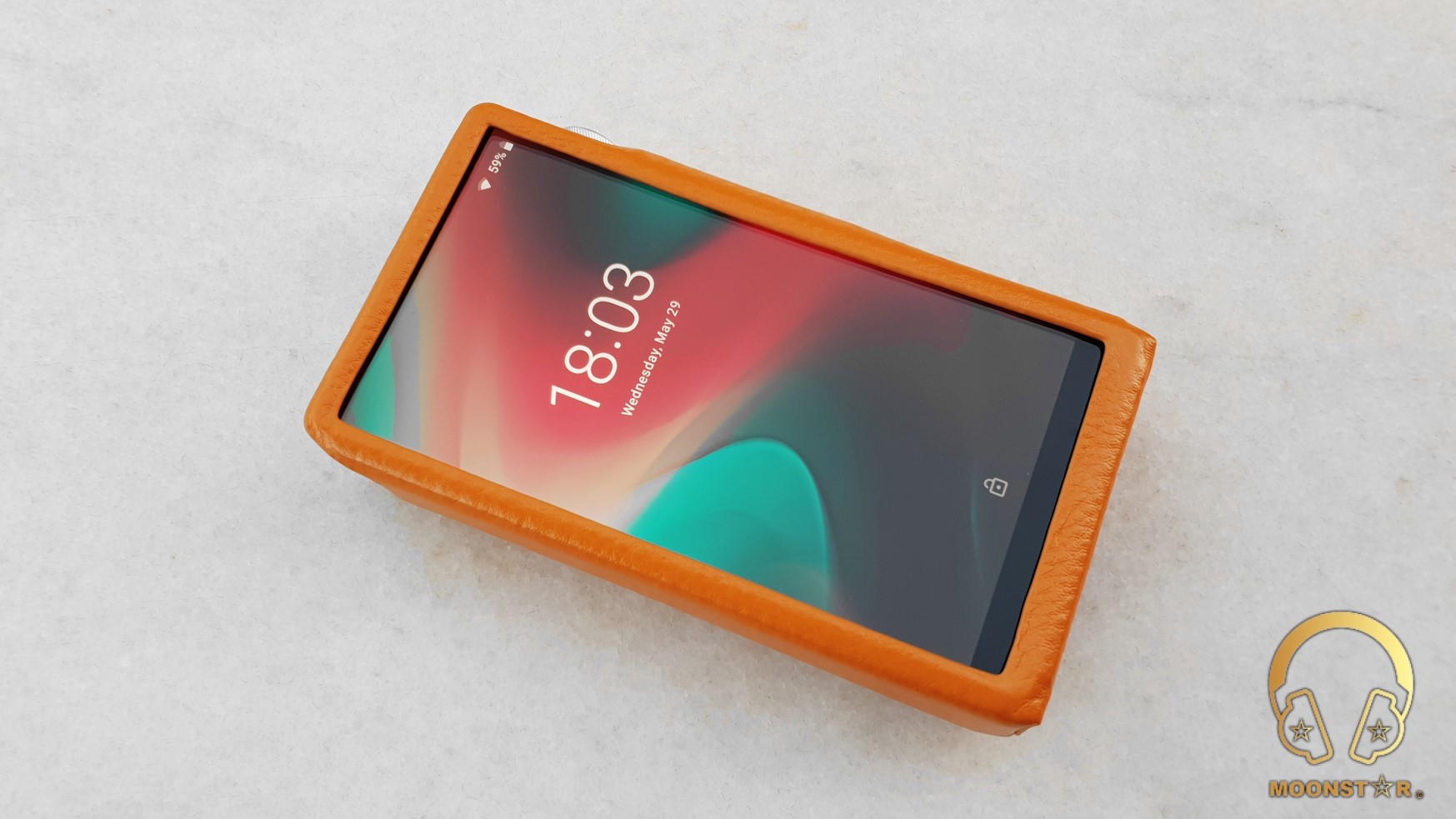
The speed of the User Interface and applications has been improved dramatically after the latest update V1.12.149 that was announced on 19.06.2019. The update can be done easily over the update settings menu. You can download the update via OTA (Over the Air via WiFi) or you need to download the FW zip file to your PC and must copy it to your device strorage.

The iBasso DX220 with its “offical firmware” doesn’t comes with Google Services like the Play Store, Play Music, etc. But has two preinstalled “Play Store” alternatives which are the so called CoolApk and APKPure applications.
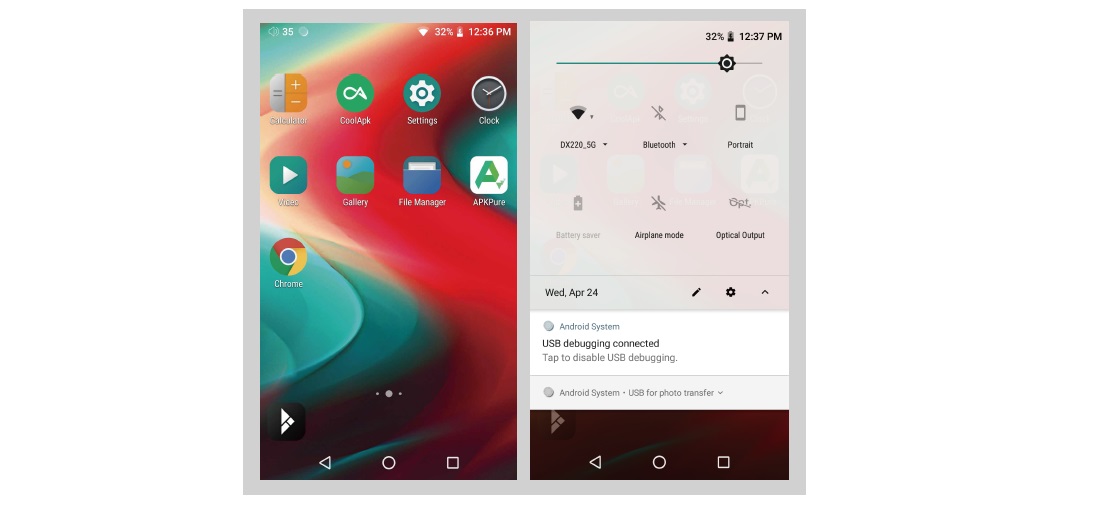
These Google Pay Store alternatives giving you the choice to install online music services (Spotify, Tidal, Apple Music, etc.) or any other third party application of your liking.
You cave also the option to install so Called Custom Rom’s like those of Lurker, which has all Google Play services including the “Play Store”.
Here is the link for those who are interested to install Lurkers Custom 8.1 Oreo ROM.
Link: https://github.com/Lurker00
Beside this Market alternatives are some other pre installed applications like a calculator, chrome browser, clock, file manager, gallery, settings, video and the Mango Music Player shortcut.
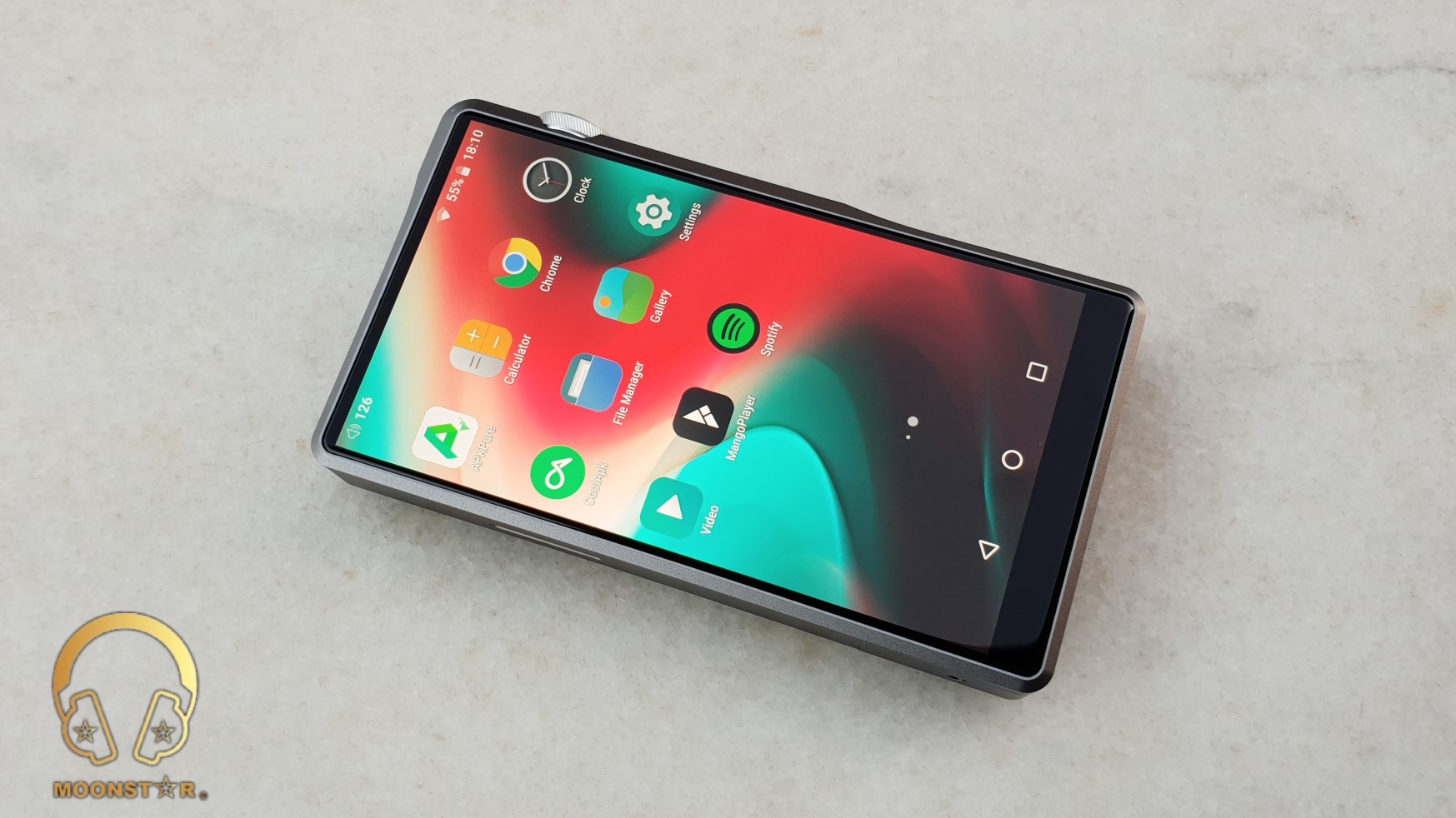
On the home page of the DX220 has a nice widget of the iBasso exclusive Mango Player application. The widget features the album cover, song title, remaining time and buttons like play/pause, previous/rewind & next/fast forward.
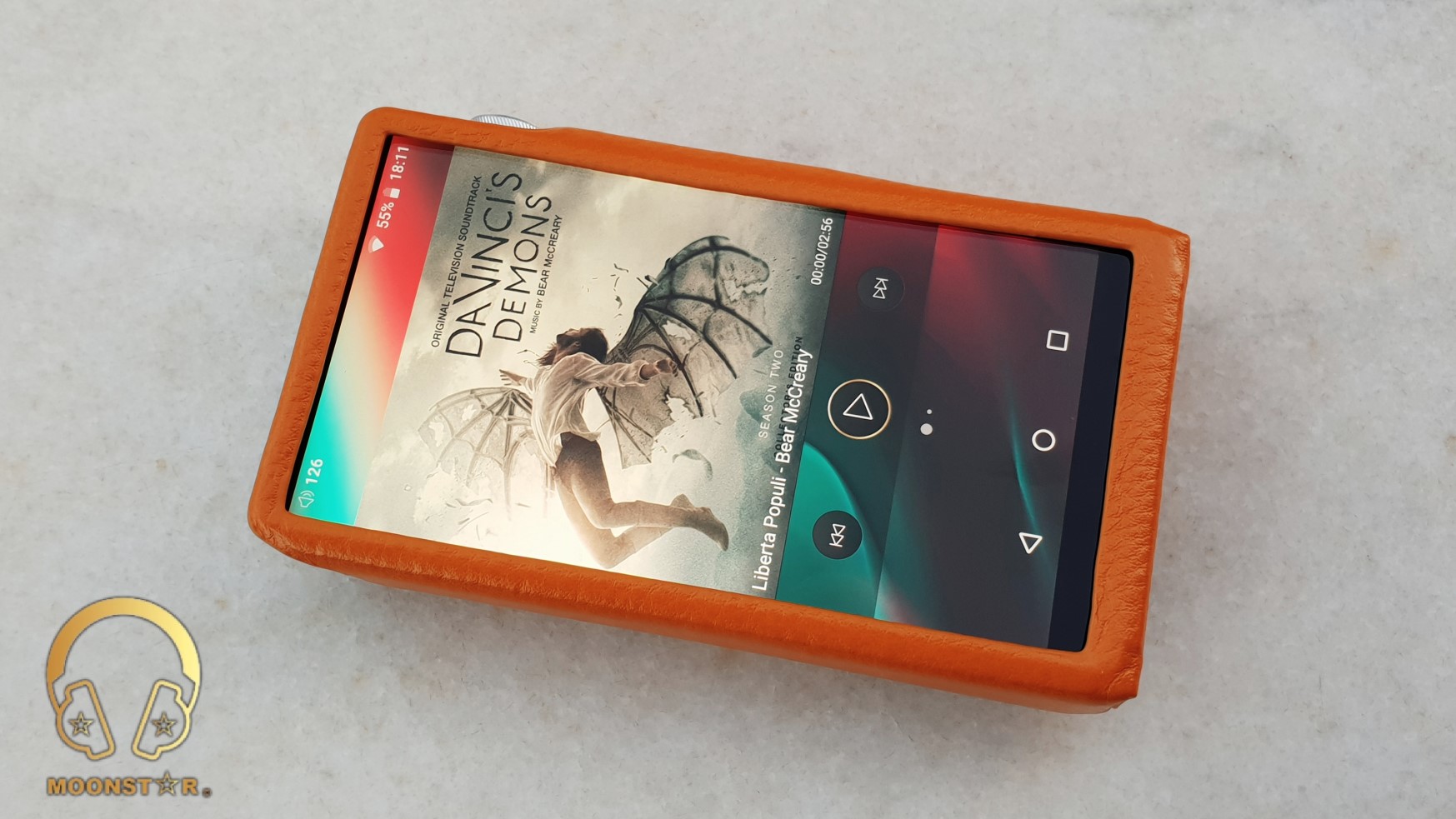
Android OS offers some nice and pretty familiar benefits like the “Top Navigation Bar” for a quick access to your Wi-Fi or Bluetooth connection. In addition there are also some helpful shortcuts like optical out (switch on/off) or Battery Saver (switch on/off).
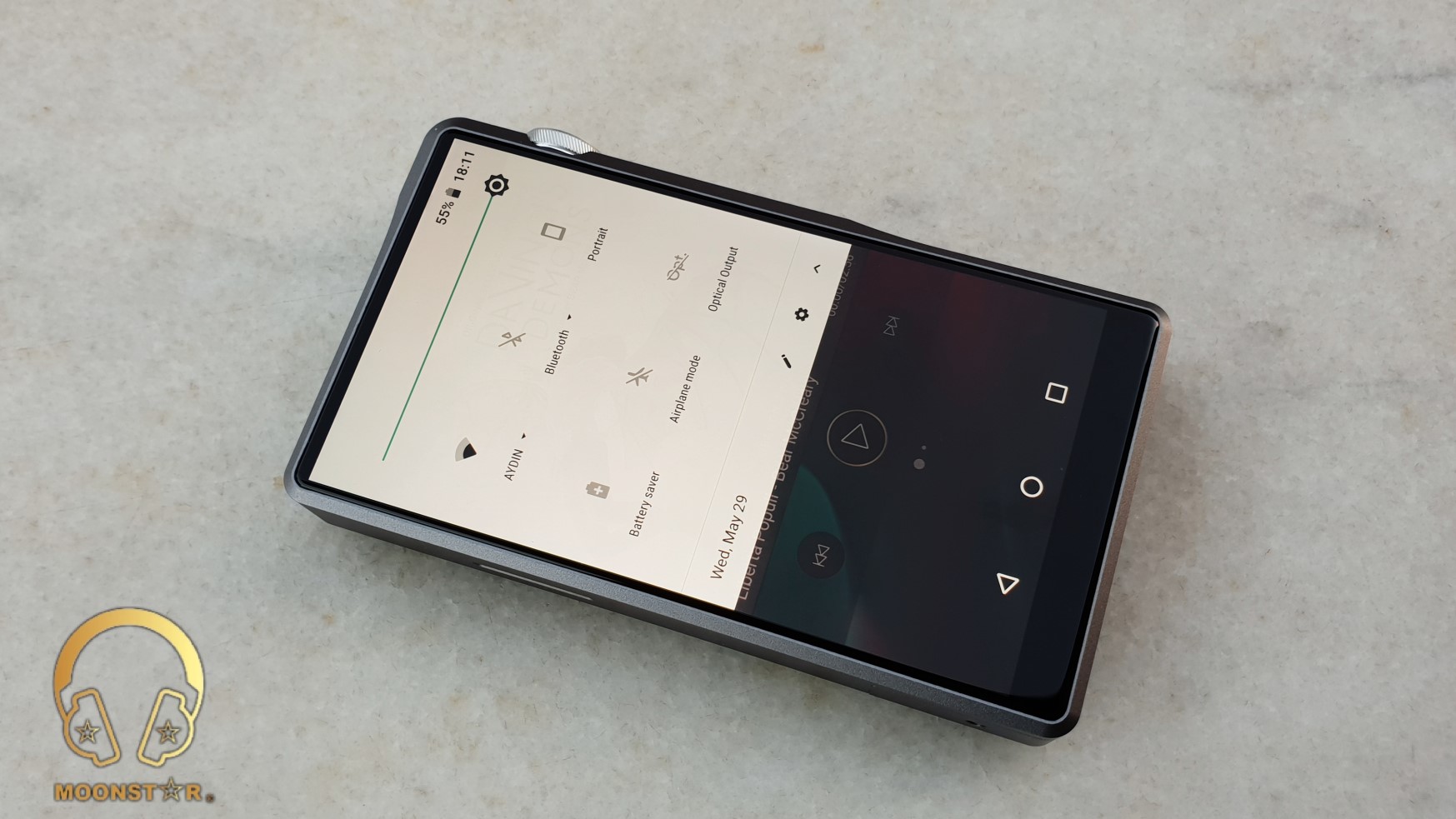
On then bottom of the home screen are the classical navigation button like the back (triangle), home (circle) and task manager (square).

The settings menu is quite simple and many of us who are using or have used an Android device will feel very familiar with the menus and UI of the settings menu.

The Audio Settings Menu is allowing you to activate the optical out or to switch between low/normal/high gain and to chose 7 different Digital Filters, etc.
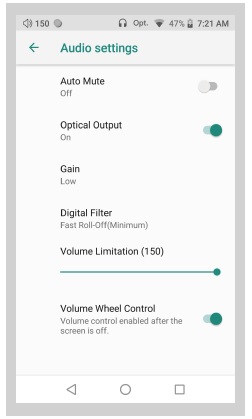
Those Digital filters are Fast Roll-Off (Linear), Slow Roll-Off (Linear), Fast Roll-Off (Linear), Slow Roll-Off (Minimum), Apodizing (Linear), Fast Roll-Off (Hybrid) and Brick Wall (Linear).

The iBasso DX220 has a Dual Boot feature which allows you to switch from the Android OS to the Mango OS which is a iBasso exclusive Linux Operating System.
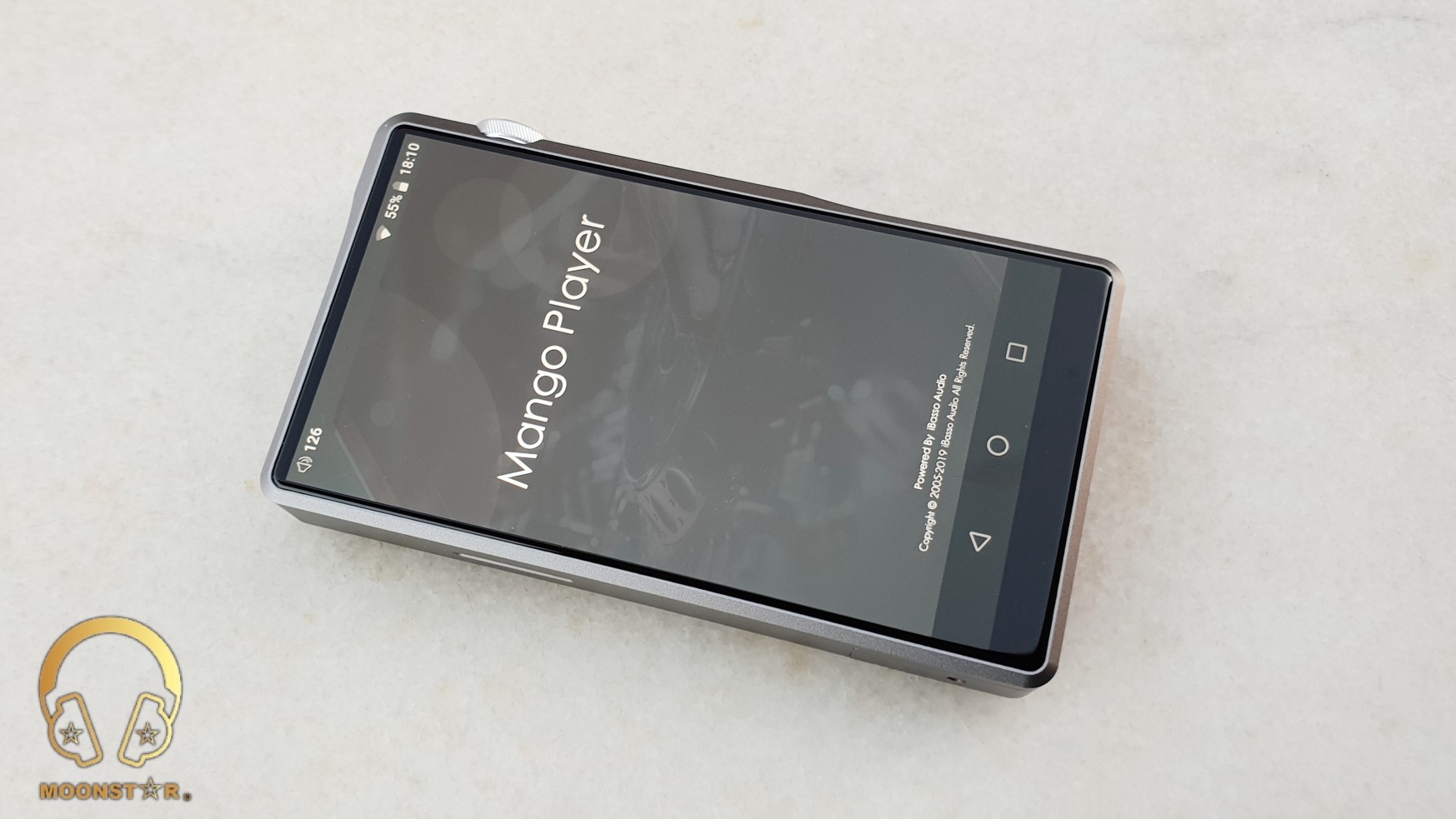
To switch between Android 8.1 Oreo and Mango OS, you need to long press the power button for 3 seconds. There is a pop up window with three options where you can select “To Mango”. To return to the Android System, go into the advanced menu of Mango OS and chose Android.
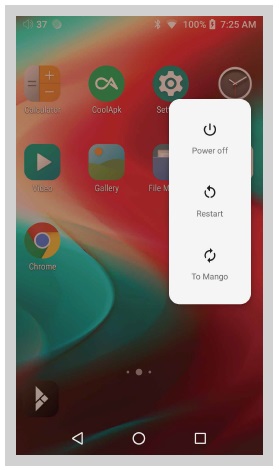
B) Mango Music Player:
The Mango Music Player application looks quite different compared to those who can been find on the DX150 and DX200. It has a nice design and some additional features like the section with 7 digital filters and Parametric Equalizer (in short PMEQ) option under the EQ settings menu.

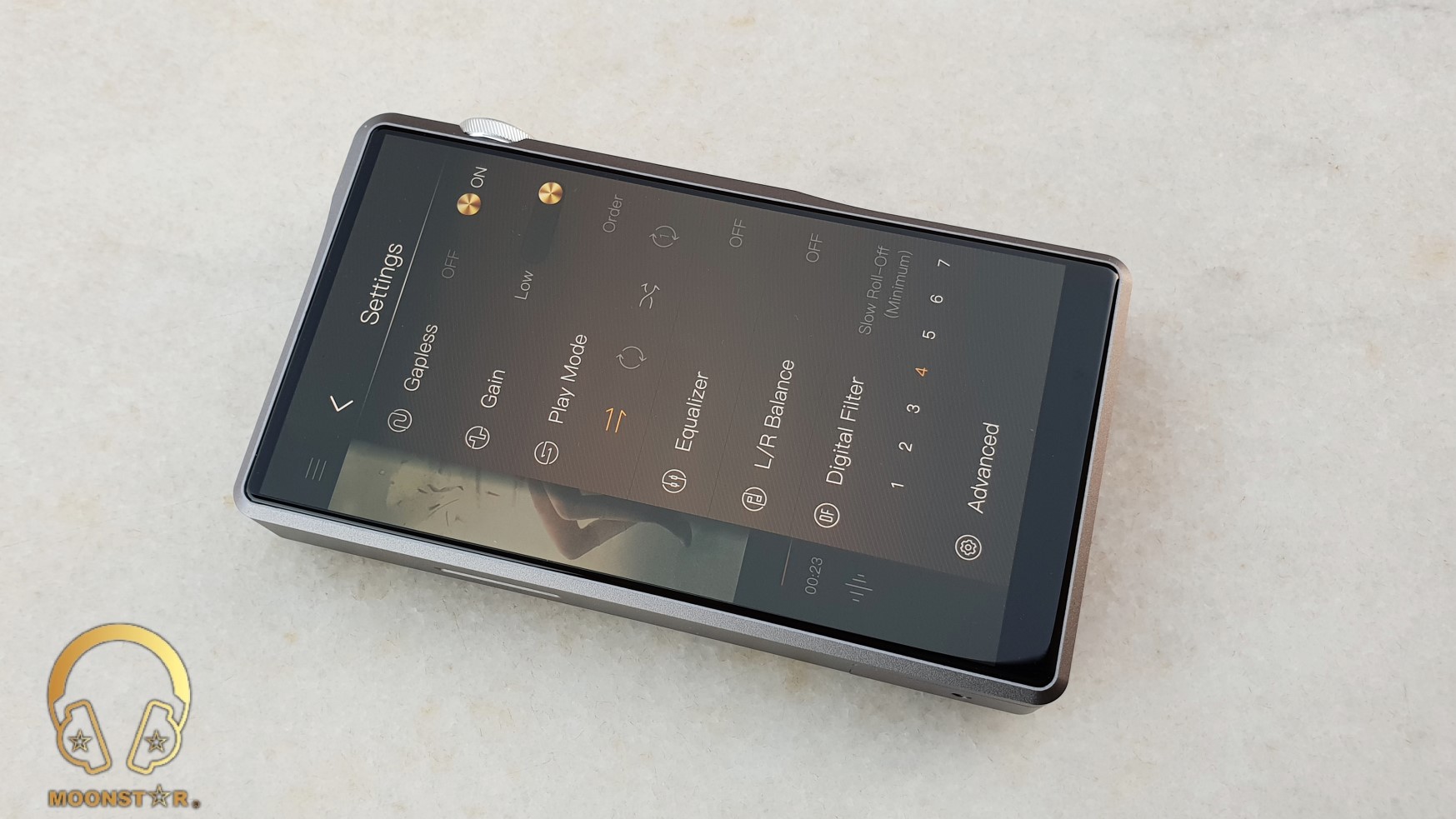
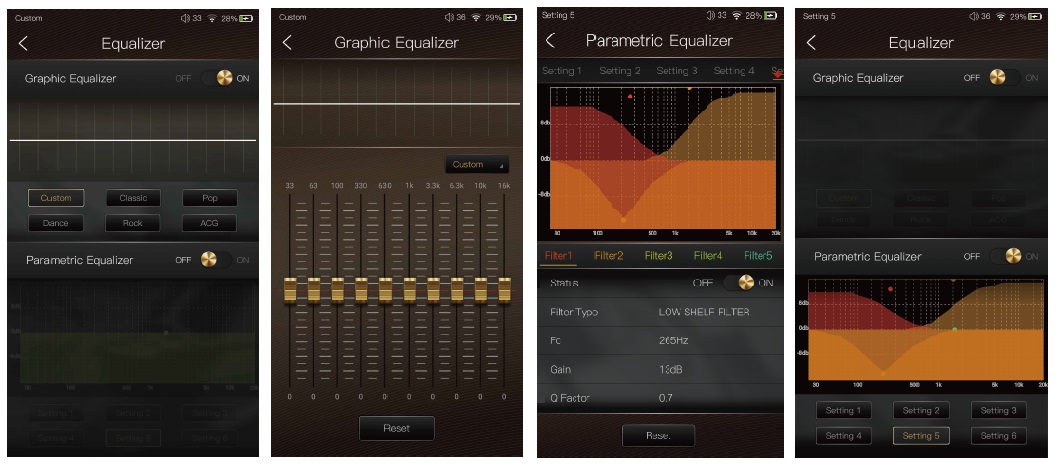
Here is an overview of the user interface of the Mango Music Player.
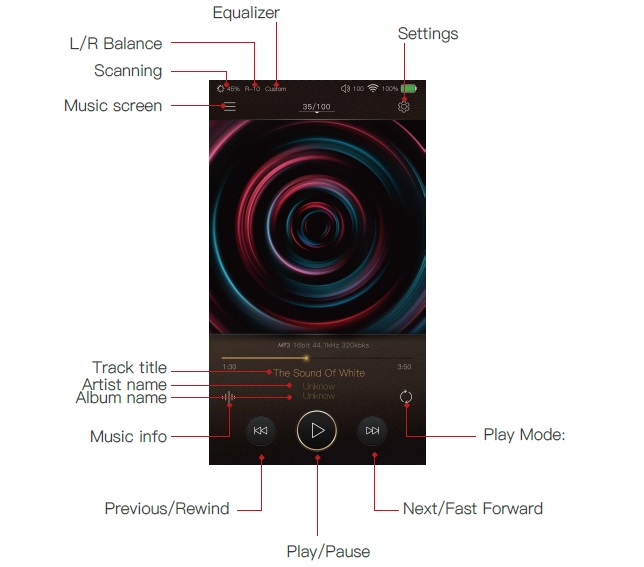
C) Mango OS:
The Mango OS is the Linux based Operating System created by iBasso which allows a Pure Music Experience. Mango OS doesn’t supports Wi-Fi and Third Party applications like Spotify, Tidal Apple Music, etc. but has now a much more modern UI compared to older devices like the DX80.
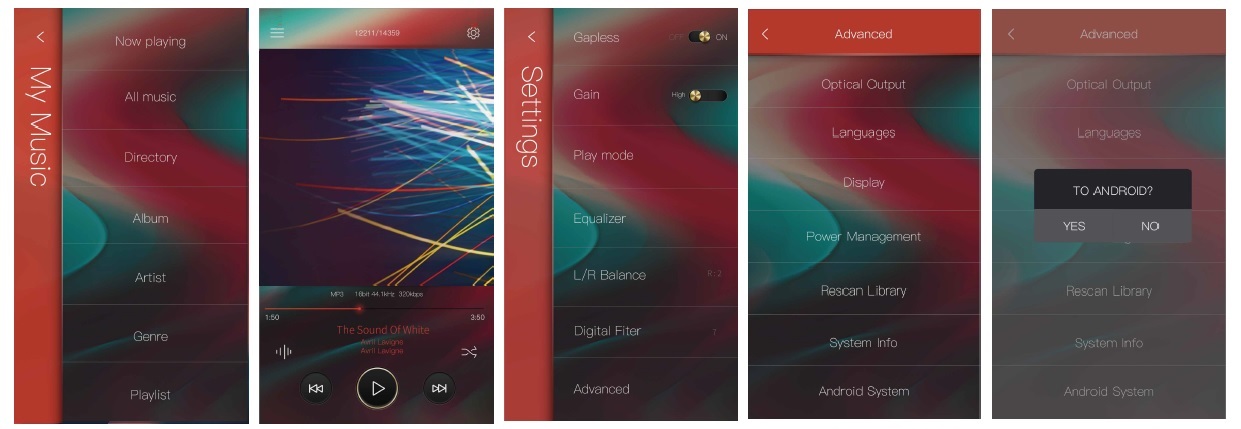
The user interface of the Mango Music Player is very nice and fast, but it reacts a bit slower than the Mango Music Player application found on the Android operating system.
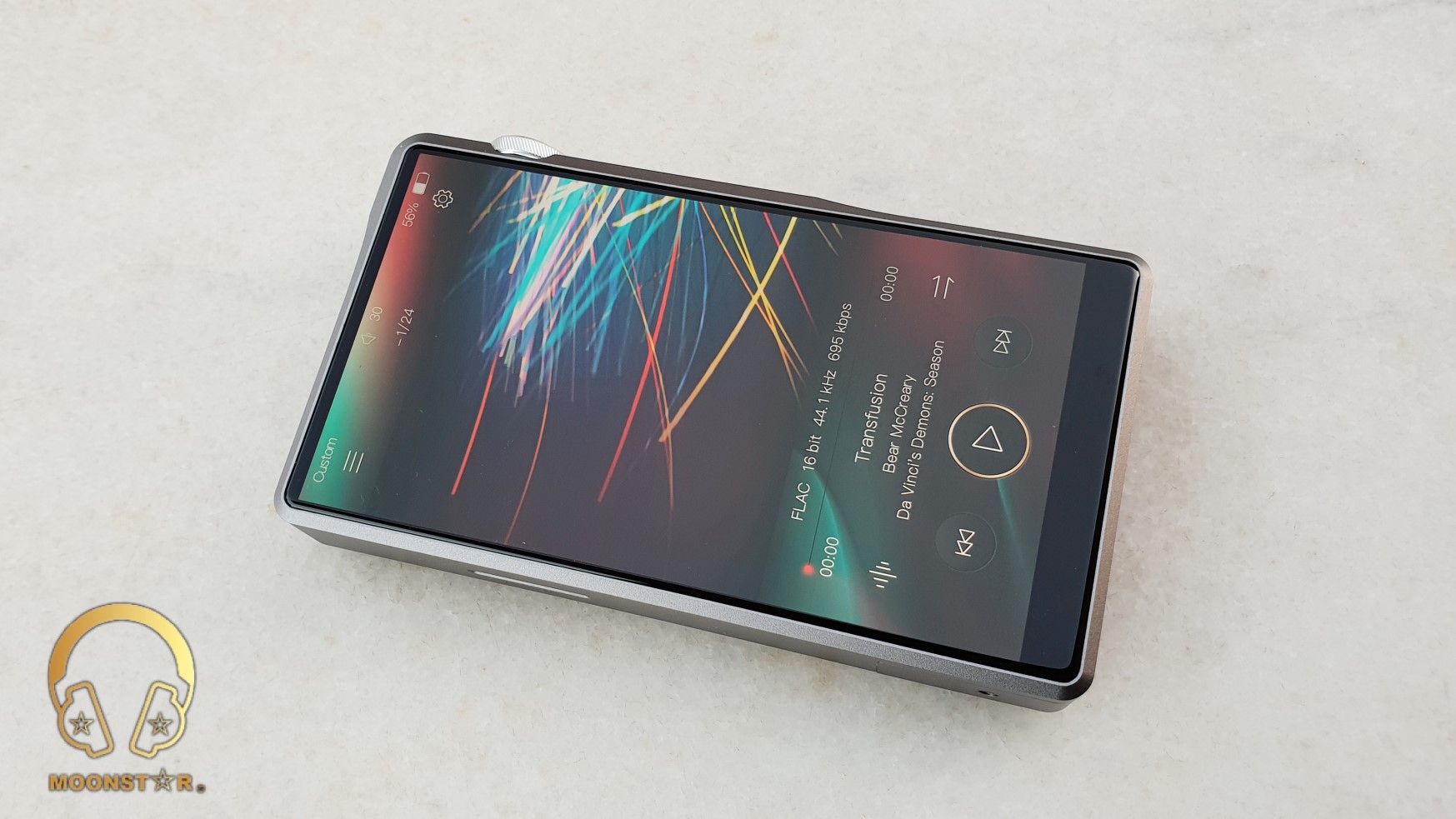
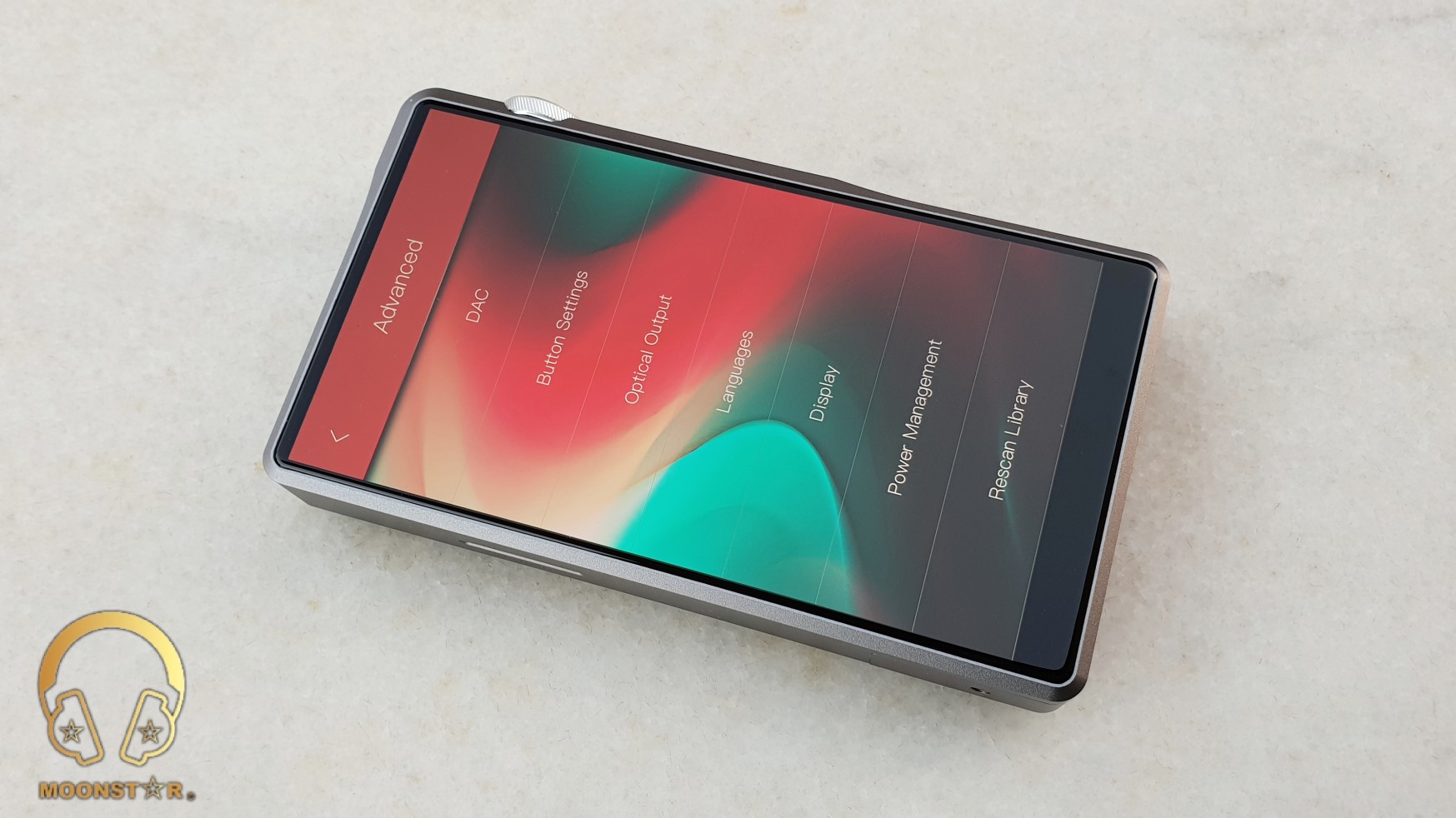
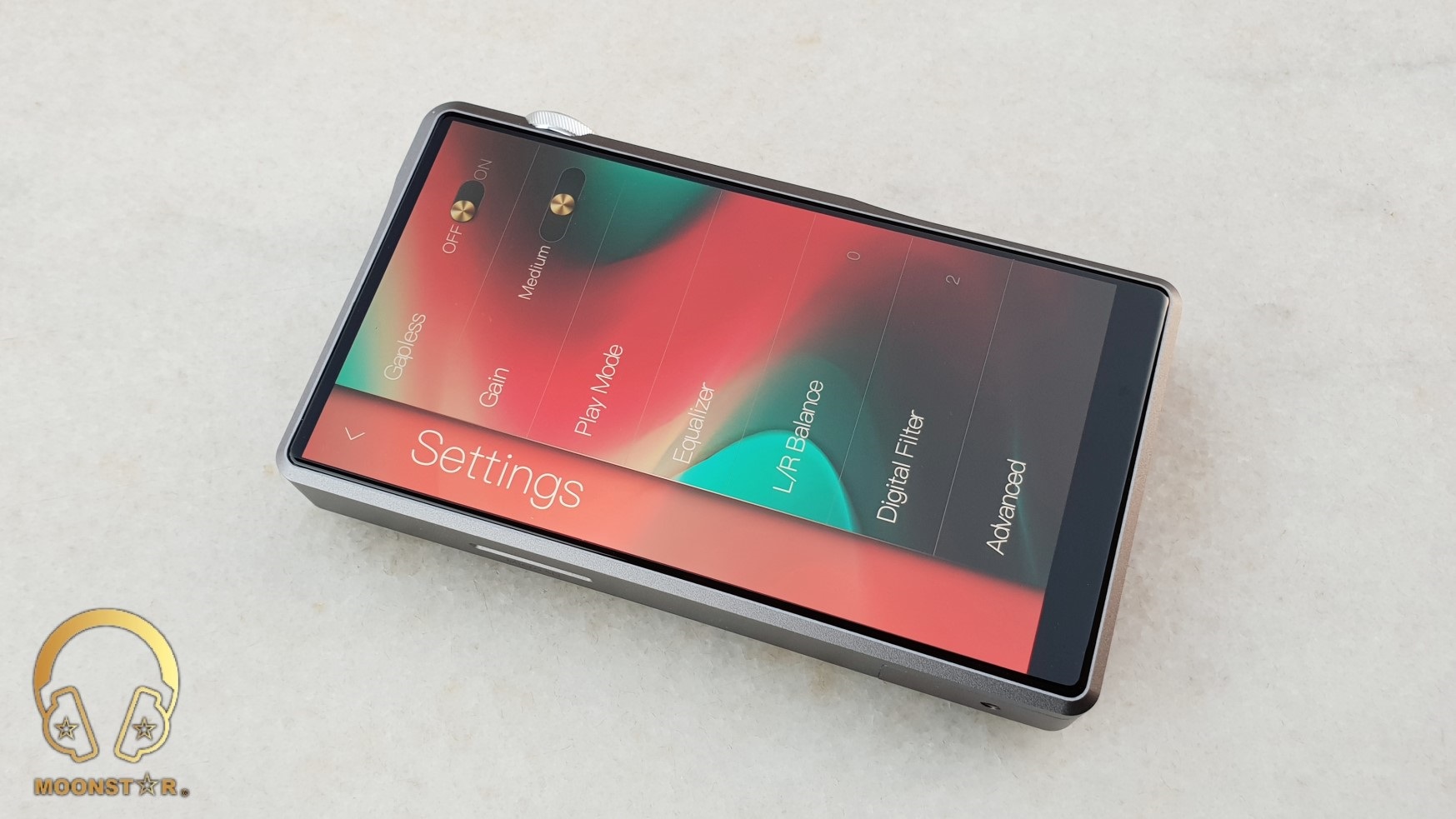
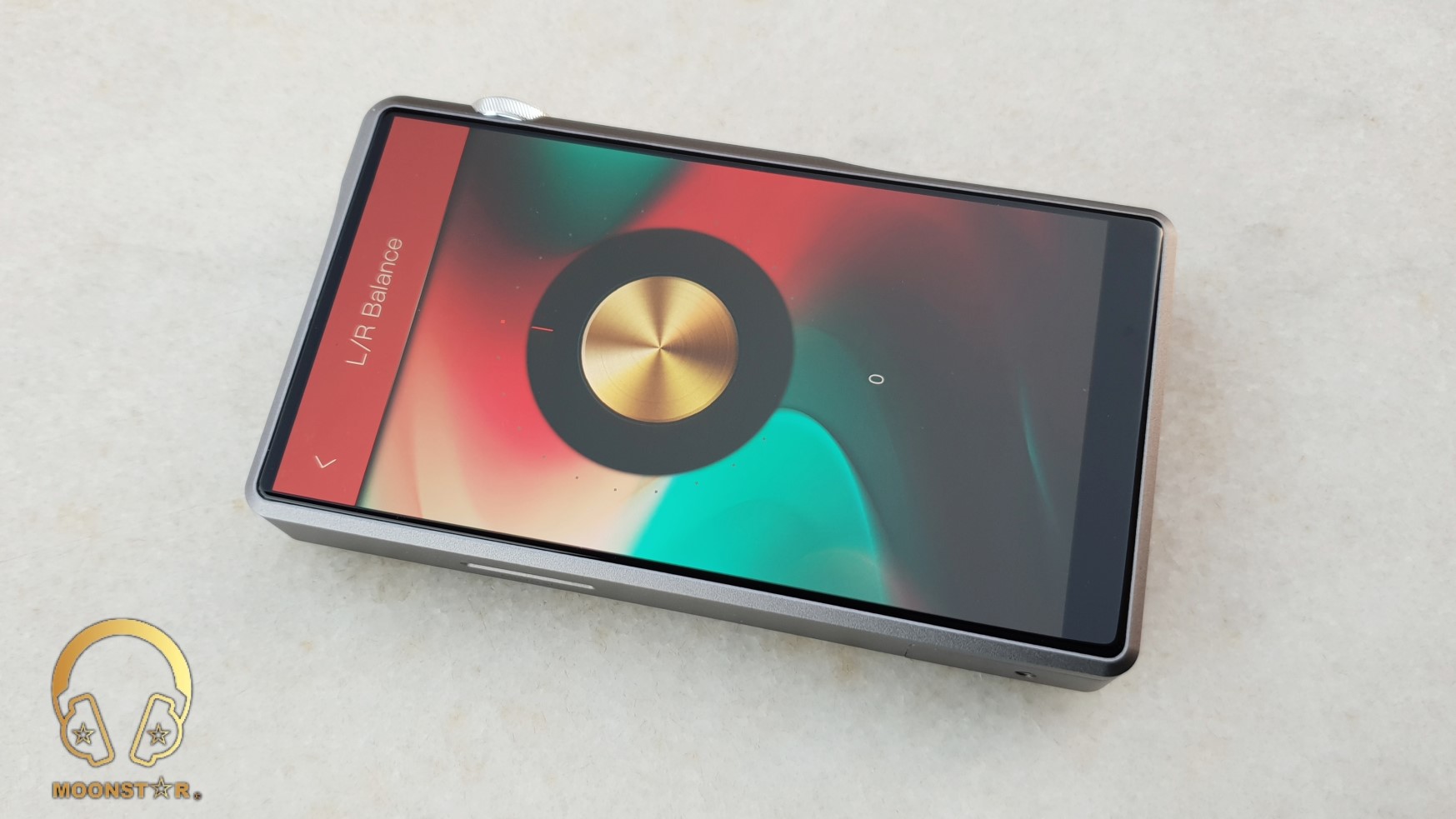
The 10 band EQ that can be found on Android OS remains while you lose the beautiful PMEQ (Parametric Equalizer) which is the only negative about then Mango OS.
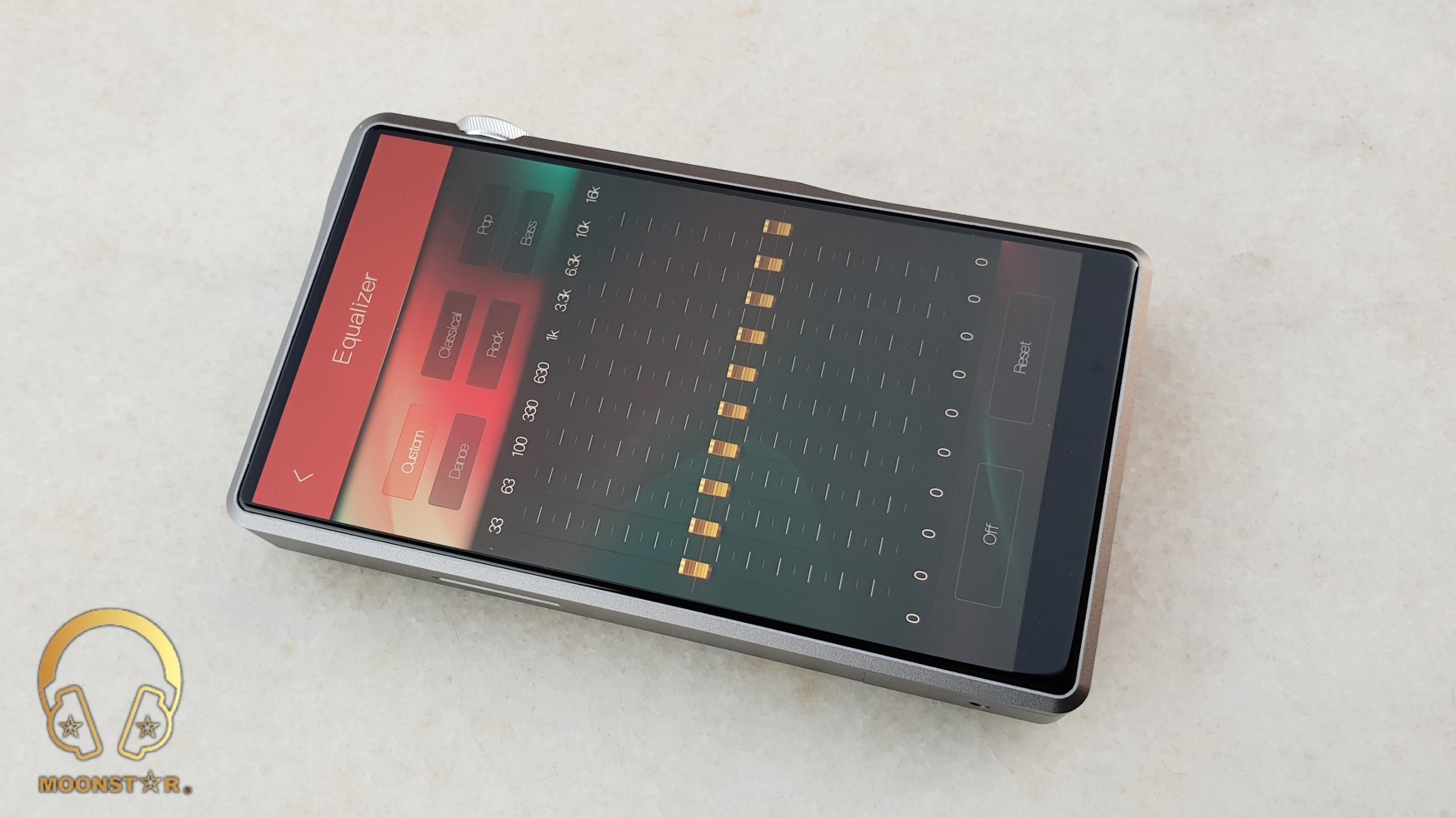
Battery Life:
The iBasso DX220 has a build in 4400mAh 3.8V Li-Polymer battery which offers according to iBasso specs up to 8 – 9 hours of operating time. My test results over the 2.5mm Balanced (TRRS) output with low gain (volume 70 out of 150) showing a battery life that varies between 7.5 – 8 hours (Flac 16bit/44.1kHz) while the 3.5mm unbalanced (TRS) result is around 8.5 hours.

Equipment’s used for this review:
- DAP’s : iBasso DX220, QLS QA361, Sony WM1A
- IEM’s : iBasso IT04, iBasso IT01S, Campfire Audio Atlas, HiFiMAN RE2000
- Earbuds : Rose Masya Pro, K’S Samsara 300 Ohm
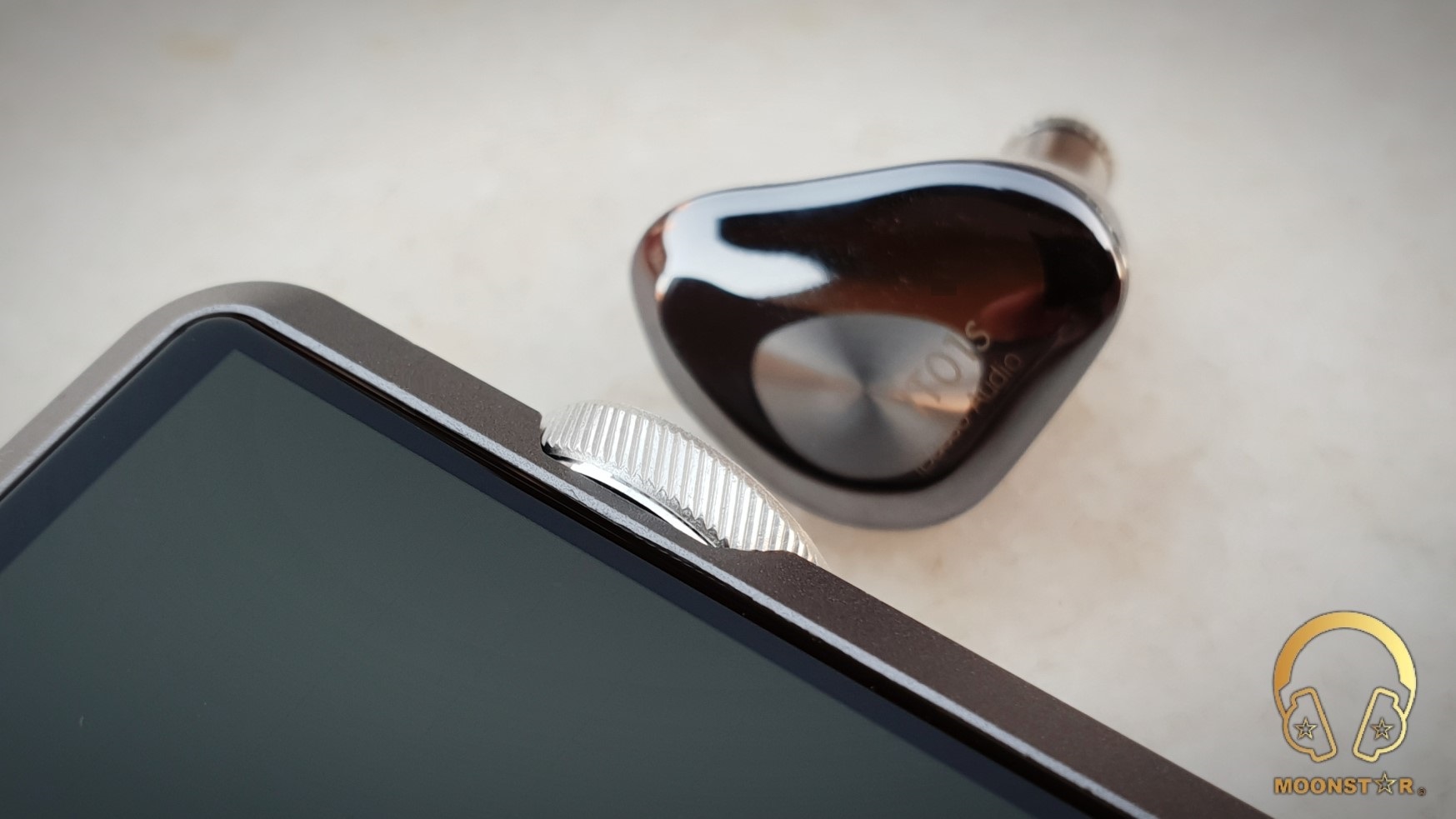
Albums & tracks used for this review:
- Liquid Tension Experiment 2 – Acid Rain (Flac 16bit/44.1kHz)
- Opeth – Damnation (Wav 16bit/44kHz)
- Metallica – Sad but True (Flac 24bit/96kHz)
- Megadeth – Sweating Bullets (Flac 24bit/96kHz)
- Slayer – Angel of Death (Flac 24bit/96kHz)
- Rush – Leave That Thing Alone (Flac 16bit/44.1kHz)
- Elton John – Your Song (Flac 24bit/192kHz)
- David Bowie – Black Star (Flac 24bit/96kHz)
- Dave Gahan – Kingdom (Flac 16bit/44.1kHz)
- Eric Clapton – Unplugged Album (Flac 24bit/96kHz)
- B.B. King – Riding With The King (Flac 24bit/96kHz)
- First Aid Kit – My Silver Lining (Flac 16bit/44.1kHz)
- London Grammar – Interlude (Live) (Flac 24bit/88kHz)
- Aretha Franklin – I Say a Little Prayer (Wav 16bit/44.1kHz)
- Diana Krall – So Wonderful (DSF)
- Laura Pergolizzi – Lost On You “Live at Harvard and Stone” (Wav 16bit/44.1kHz)
- Rush’s – Leave That Thing Alone (Flac 16bit/44.1kHz)
- Gogo Penguin – Raven (Flac 24bit/192kHz)
- Otto Liebert& Luna Negra – The River (DSF) – Binaural Recording
- Vivaldi – Le QuarttroStagioni “The Four Season” (Wav 24bit/88kHz)
- Armin Van Buuren – Vini Vici (Spotify)
- Lorde – Royal (Flac 24bit/48kHz)
- Tom Player – Resonace Theory (16bit/44.1kHz)
- Massive Attack – Angel (Flac 24bit/192kHz)
- Portishead – The Hidden Camera (MP3 320kHz)
The Sound:
The iBasso DX220 has a fairly neutral, slightly warmish tonality and shows a transparent, musical and quite balanced sound character.
The DX220 has an energetic and deep bass character, a transparent and musical midrange, a treble range with good detail retrieval & extension and 3D like holographic soundstage presentation.
The Bass:
Subbass:
The iBasso DX220 has a quite energetic subbass presentation which shows an impressive depth for a Digital Audio Player. The subbass quantity and extension is on a good level, like for example in tracks of Massive Attack’s “Angel” and Portishead’s “It Could Be Sweet” and shows a slightly warm and soft tonality.
One other remarkable positive ability of DX220’s subbass performance is the speed of it beside the depth, which is the main reason why the subbass of the DX220 is never overshadowing the clarity of the overall presentation even in very subbass intensive tracks.
Midbass:
The iBasso DX220 has a strong, punch and fast midbass presentation with a slightly soft character. The midbass intensity is as effective and powerful as the subbass, while the DX220 doesn’t shows any negative situations like a midbass hump or mixing. The midbass of the DX220 are detailed and transparent.
The midbass area sounds clear, slightly musical and not too thin or thick and doesn’t show a too dry tonality. For example, instruments like cross drums or trumpets have a good intensity and speed. I would like to point out that I have not heard any other DAP that has sounded faster and more technical in this area.
Other Instruments like contrabasses are sounding very clear, fast, slightly thick and accentuated. The separation and detail level of drums and contrabasses that are played in fast Jazz music passages is pretty high.
All in all, the bass of the DX220 is in general fast, clean and detailed. Especially the speed, separation and control of the DX220 in this area are noteworthy.

The Midrange:
The midrange of the iBasso DX220 sounds a bit soft, quite transparent, slightly colored and very clean, while both male vocals and female vocals are equally successful, while the timber of instruments is quite soft slightly musical and clear.
Vocals:
The Dx220 is a highly controlled, detailed and vibrant sounding DAP in every frequency region and the same goes for vocals.
Male vocals have a good lower midrange depth and unlike most DAPs, male vocals have the same emphasis and success as female vocals. Male vocals have a slightly thick, crisp, clear and pleasant tonality, while it is possible to hear and to follow emotion changes clearly such as sadness, enthusiasm and softness in male vocals.
All the male vocals, from Dave Gahan, B. B. King, Eric Clapton to Elton John and David Bowie, who I have listened to with the DX220, have been very successful and entertaining.
Female vocals on the other hand are sounding very clean, lively, transparent and emotional due to the well tuned and pronounced upper midrange character.
The female vocals doesn’t sounding harsh or ear piercing because of their strong but very controlled upper midrange emphasis, which make it quite enjoyable to listen to with the iBasso DX220. Female vocals are shown with an above average performance in terms of extension, detail, transparency and emphasis. From Alto female vocals to Soprano female vocals, the DX220 is a highly detailed and successful sounding Digital Audio Player.
Instruments:
The instrument tonality of the DX220 is musical, fairly neutral and smooth in its presentation. The fact that instruments don’t sound too dry or sterile is one of the plus points of iBasso DX220. The instruments have a very lively, clear and transparent presentation, while the separation of instruments and vocals is very successful.
The instruments have neither a too thick nor thin tonality; there is a good balance in the middle of the two. Since there is a fairly neutral air between the instruments, they sound airy and clean. The fact that the instruments do not play too close or far away makes the iBasso DX220 to a very balanced and controlled sounding Digital Audio Player.
I found the DX220 to be quite successful and detailed in terms of instrument clarity and in terms of separation of the instruments from the vocals.
Instruments like guitars sounding slightly warm and quite transparent, while it was especially enjoyable for me to listen to the guitars on Eric Clapton’s Unplugged Album. Other instruments like pianos are fairly soft and shiny in tonality, without to show any unnecessary sharpness.
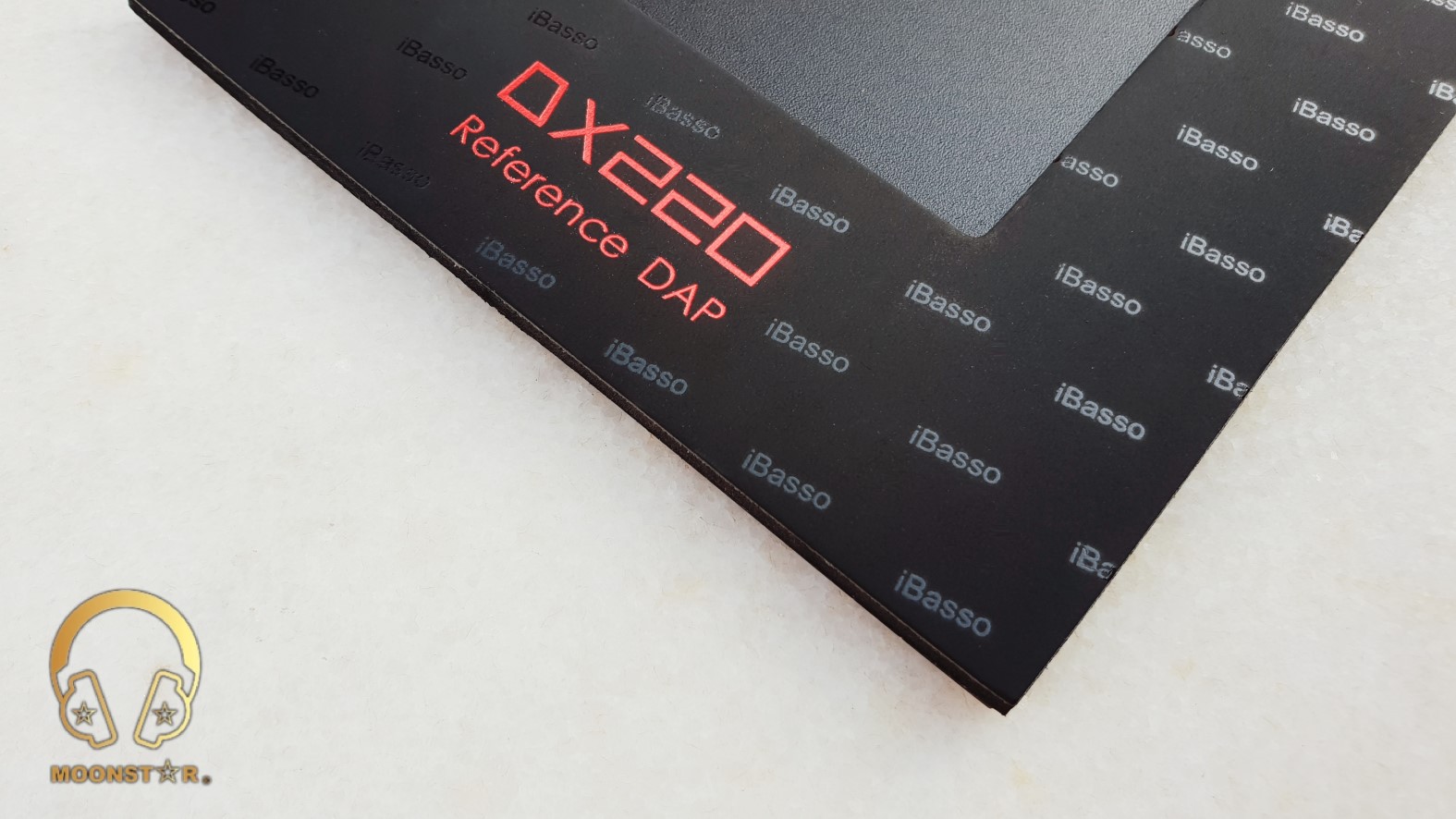
The Upper Midrange:
The iBssso DX220 has a slightly soft, quite transparent and neutral sounding upper midrange character, which doesn’t sound dull or too prominent. The upper midrange is not to sharp or penetrating, and everything sounds in a quite controlled manner.
The control of the upper midrange and the fact that it doesn’t sounds harsh/sharp in this frequency region making the DX220 to an fatigue-free DAP, which is ideal for long listening periods.
The DX220 performs very well in terms of control, detail and clarity in the upper midrange, especially where instruments play at high distortion.
For example, the cymbals, drums, vocals and guitars are very clear in the upper midrange passages in genres like metal music. It is very rare to found that a guitar plays so much clear and controlled during higher distortion levels.
Guitars and guitar solos which are played with high distortion in Megadeth’s “Sweating Bullets”, Slayer’s “Angel Of Death” and Rush’s “Leave That Thing Alone” sounding very clean, detailed and controlled.
Other instruments like the violins are slightly bright and are showing good extension, while the piano also doesn’t showing any loss of upper midrange emphasis or extension.
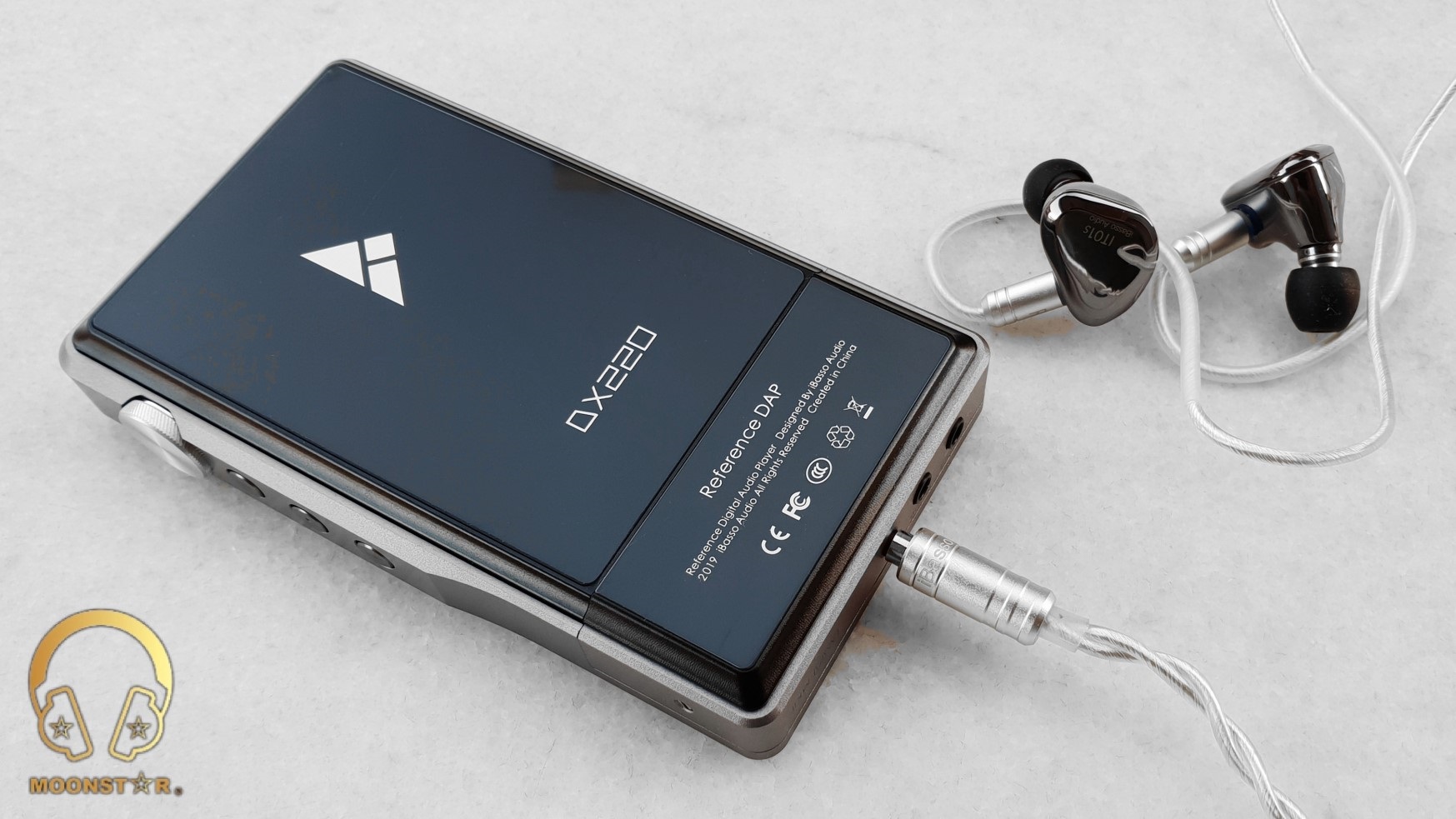
The Treble:
The iBasso DX220 has very well adjusted treble presentation that is neither too much nor too low in quantity. The treble is shown in a soft, controlled, slightly bright, very spacious and airy presentation.
The treble doesn’t sound too much forward and harsh, even in the most complex and fastest recordings. For example; Instruments like cymbals or bells in metal music are very successful in terms of extension, quantity, speed, control and detail. The treble range of the DX220 is also successful with genres like EDM / Pop / Trance / Rap / HipHop etc. with its fairly soft and fatigue-free presentation. In the jazz, the cymbals are as pronounced as in metal music, slightly soft, full and controlled. Neither the cymbals nor the pianos have additional brightness and sharpness; everything sounds so natural!
The violins and woodwind instruments in classical music are represented in a very natural and controlled way, everything from the flutes to the clarinets, form the pianos to the piccolos are sounding crisp, clear, slightly soft and very pleasant.
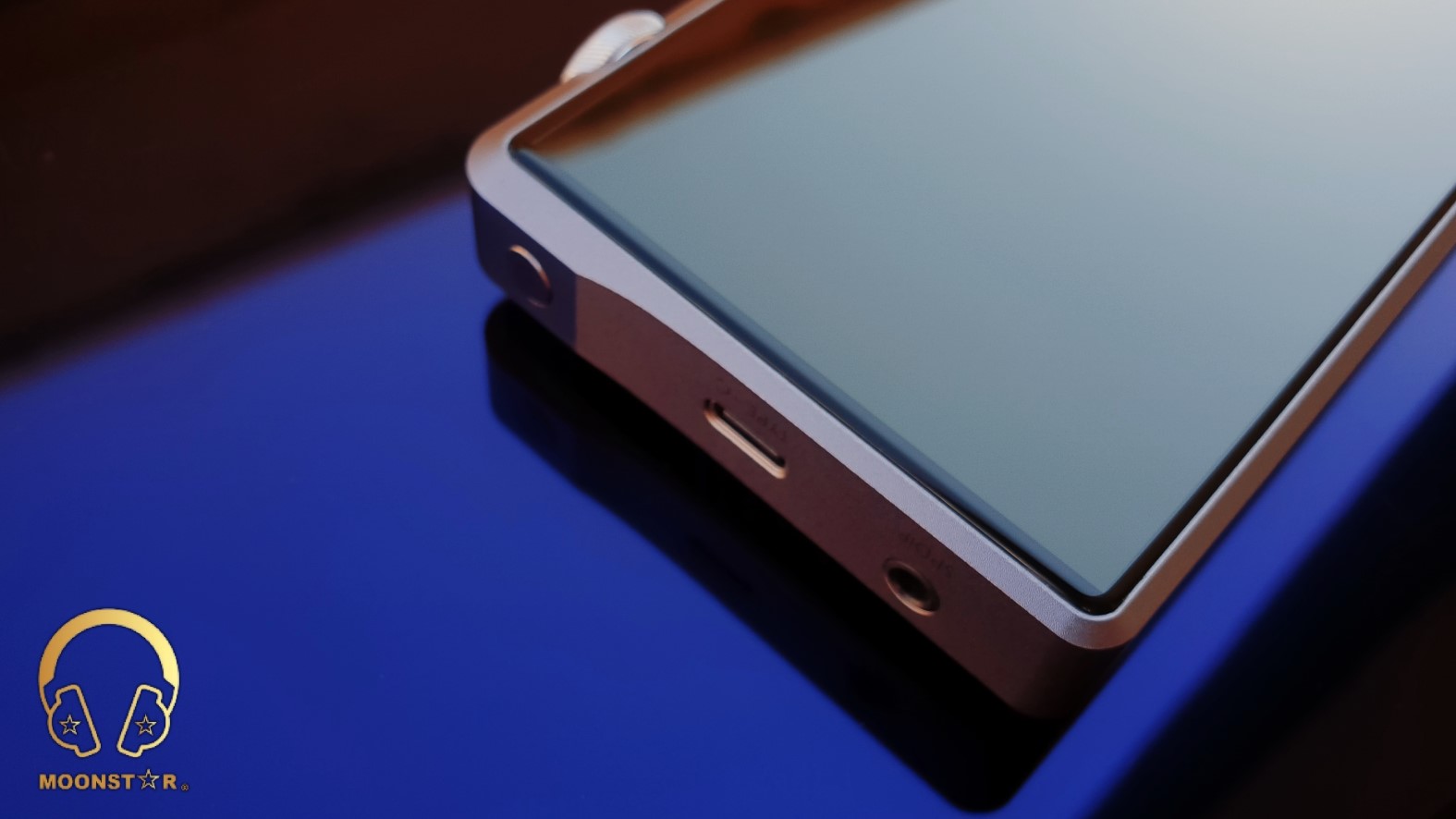
The Soundstage and Background:
The iBasso DX220 has a soundstage presentation that is spacious and airy. The stage is very wide, while it shows slightly less depth. The instruments were placed with a good positioning in this a wide stage, with great separation and without any mixings even in songs with a high instrument density.
My favorite feature of the DX220 is the extremely black background, which is pitch black, clean and noise-free. I did not hear any noise from my very sensitive IEM’s, so that I could focus more on listening to music and to have had hear micro-details more clearly.
Some Comparisons:
iBasso DX220 versus Sony WM1A
The Sony WM1A is a DAP that shows a close to neutral but slightly warmish tonality, while the iBasso DX220 sounds more powerful and fuller in general.
The both devices are showing a good subbass depth, while the DX220 has additional depth, quantity and better extension. The midbass region of both the WM1A and the DX220 is fast, controlled, stronger and with good intensity. The midbass of the WM1A are slightly more upfront due to the closer staging, while the midbass of the DX220 is more in the center and better in terms of quantity and intensity. The WM1A is slightly better in terms of bass speed and tightness.
The Sony WM1A has a slightly warm, transparent and detailed midrange presentation, while the iBasso DX220 has a slightly soft, close to neutral, a bit warmish and quite transparent presentation.
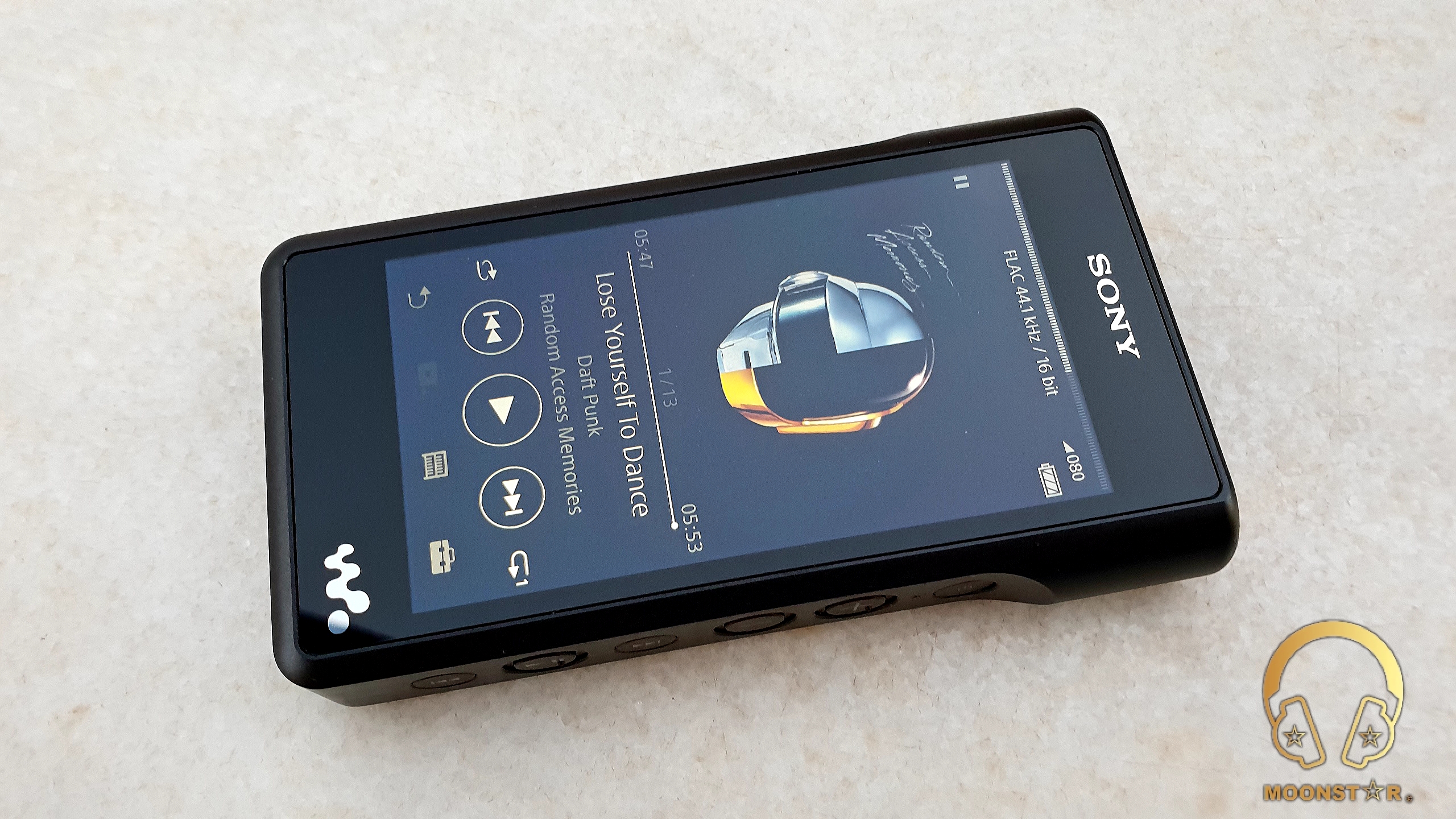
The lower midrange of the WM1A is slightly more depth and thickness than the DX220, which makes the male vocal performance of the WM1A a bit more successful. The iBasso on the other hand is superior in terms of upper midrange intensity, control and detail retrieval, which makes it also more successful while listening to female vocals. The upper midrange of the Sony WM1A sounds a bit sharper compared to the iBasso DX220 which has a softer presentation. DX220 has especially in faster track the upper hand in terms of upper midrange control.
The treble range of both devices shows good air and extension, while the iBasso DX220 is in general the more superior device in terms of treble quantity and extension.
Both DAP’s have a stage that is suitable for a precise instrument placement and separation.
The iBasso DX220 is more successful in both, the soundstage width and depth than Sony WM1A. The soundstage of the DX220 is also more airy and spacious than those of the WM1A.
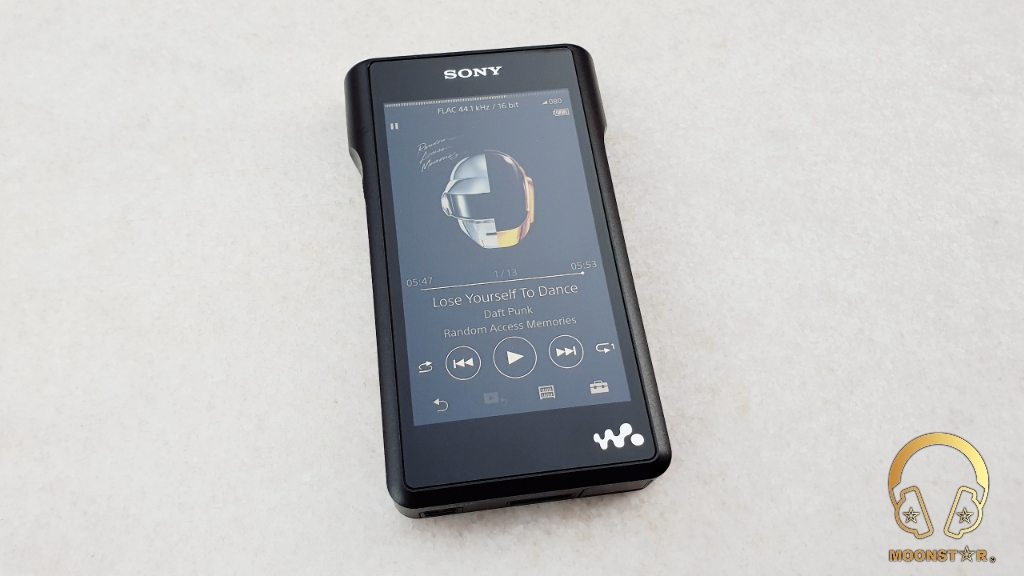
iBasso DX220 versus QLS QA361:
The general presentation of the QLS QA361 is highly transparent, neutral, detailed, flat, slightly soft and very controlled.
First of all, both DAP’s sharing a high quality subbass presentation with good depth, while the subbass character of both devices are pretty soft.
The iBasso DX220 has the upper hand in terms of subbass depth, quantity and extension, which is also more pronounced and upfront in its presentation than the QLS QA361.
When it comes to the midbass region, I can say that the DX220 shows stronger, warmer and more musical presentation. The QLS QA361 is showing pronounced midbass, with closer to neutral and tonality and an average intensity.
The midbass of the iBAsso DX220 is superior in terms of intensity and emphasis, but slightly behind the QLS QA361 in terms of speed.
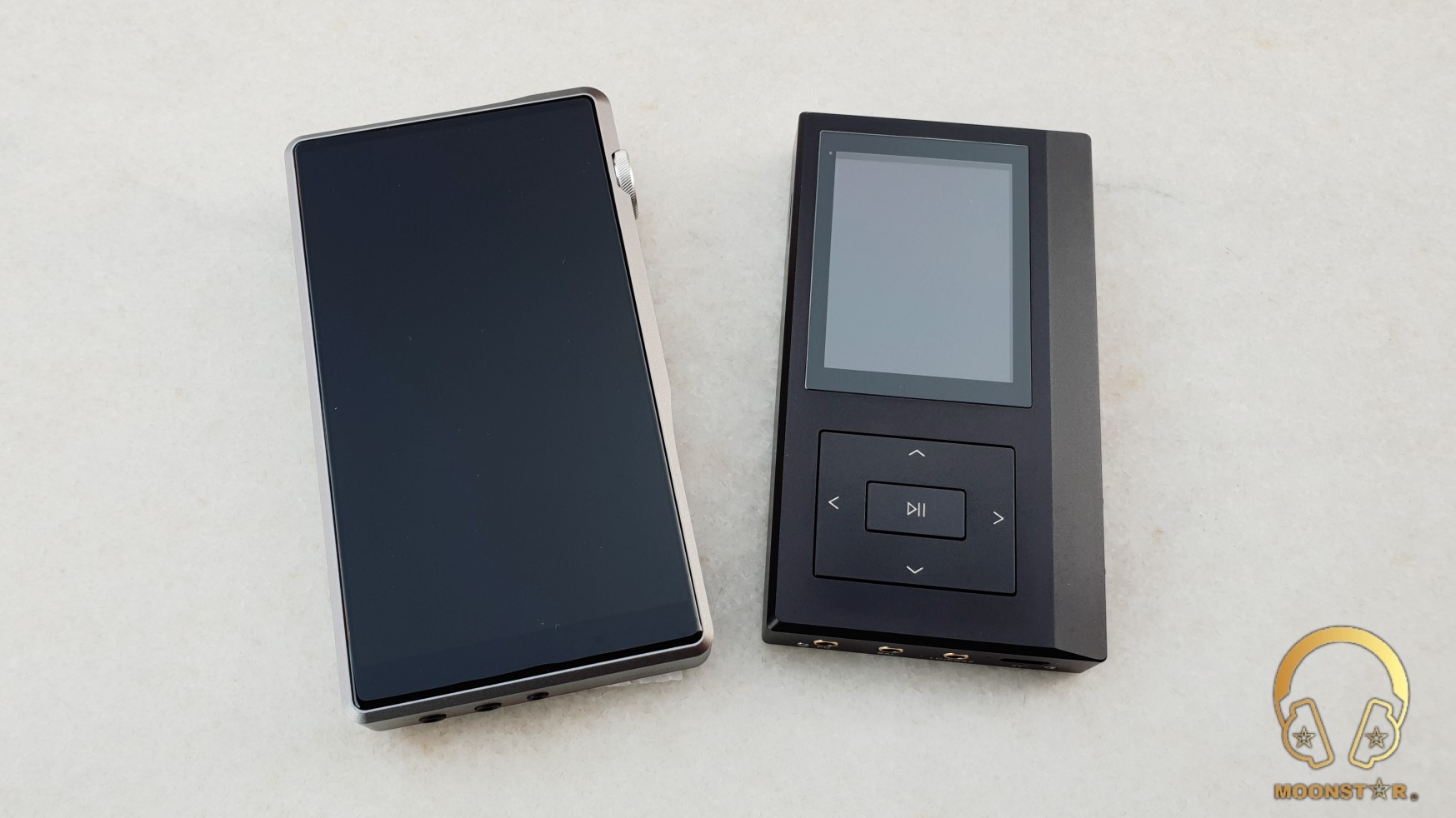
The QLS QA361 has a slightly soft, close to neutral, pretty clean and transparent midrange presentation. The iBasso DX220 on the other hand sounds a bit warmer in tonality and is more musical and full bodied in its presentation.
The lower midrange of the DX220 shows more depth and fullness than the QA361 which makes it more successful while listening to male vocals. Both DAP’s are very successful in terms of female vocal performance. The female vocals of QA361 are more neutral than the DX220, while the DX220 has a more musical and emotional female vocal performance.
The upper midrange of both DAP’s shows good emphasis and transparency, while the DX220 is superior in terms of extension, detail and airiness.
The treble range of the QLS QA361 is slightly soft, close to neutral and highly controlled, while the iBasso DX220 shows a more forward and fuller presentation than the QA361. The DX220 is slightly superior in terms of treble quantity and extension.
Both DAP’s have a stage that is suitable for a precise instrument placement and separation.
The QLS QA361 is slightly more successful in terms of soundstage wideness, while the iBasso DX220 has the upper hand in terms of depth.

Conclusion:
The iBasso DX220 will for sure fulfill the expectations of most audiophiles, who are looking for top quality sound and a good hardware, eco-system and software performance. What stands out to me is the transparent and musical midrange and 3D like holographic soundstage. All those features are placed in to a device with good build quality, wonderful screen and a replaceable AMP section.
Great Job iBasso!
Pros and Cons:
- + Great Sound Performance
- + Detail, Clarity, Musicality
- + New GUI, Mango OS, PEQ
- + Replaceable AMP Card Design
- + Good Screen to Body Ratio (approx 87%)
- + Lot of Accessories
- – The CPU&GPU has its limits

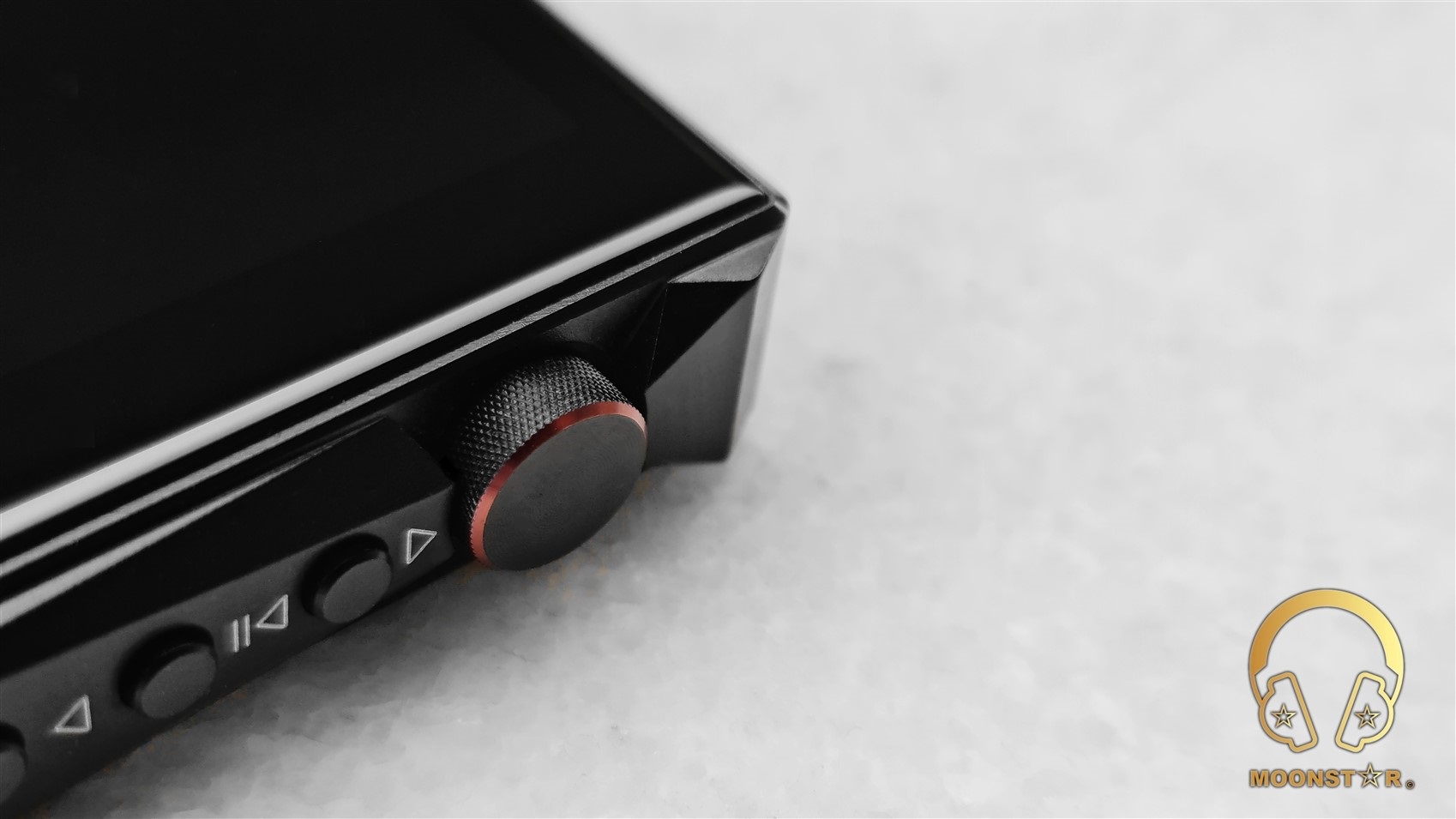










An outstanding review in all aspects . Very many thanks Moonstar the great reviewer and the experienced audiophile .
I like the iBasso DX220 with replaceable AMP card design
Please compare with Cayin-N6ii. I have Cayin-N6ii so i keen to know.
I will write a detailed comparison once I have received the N6II